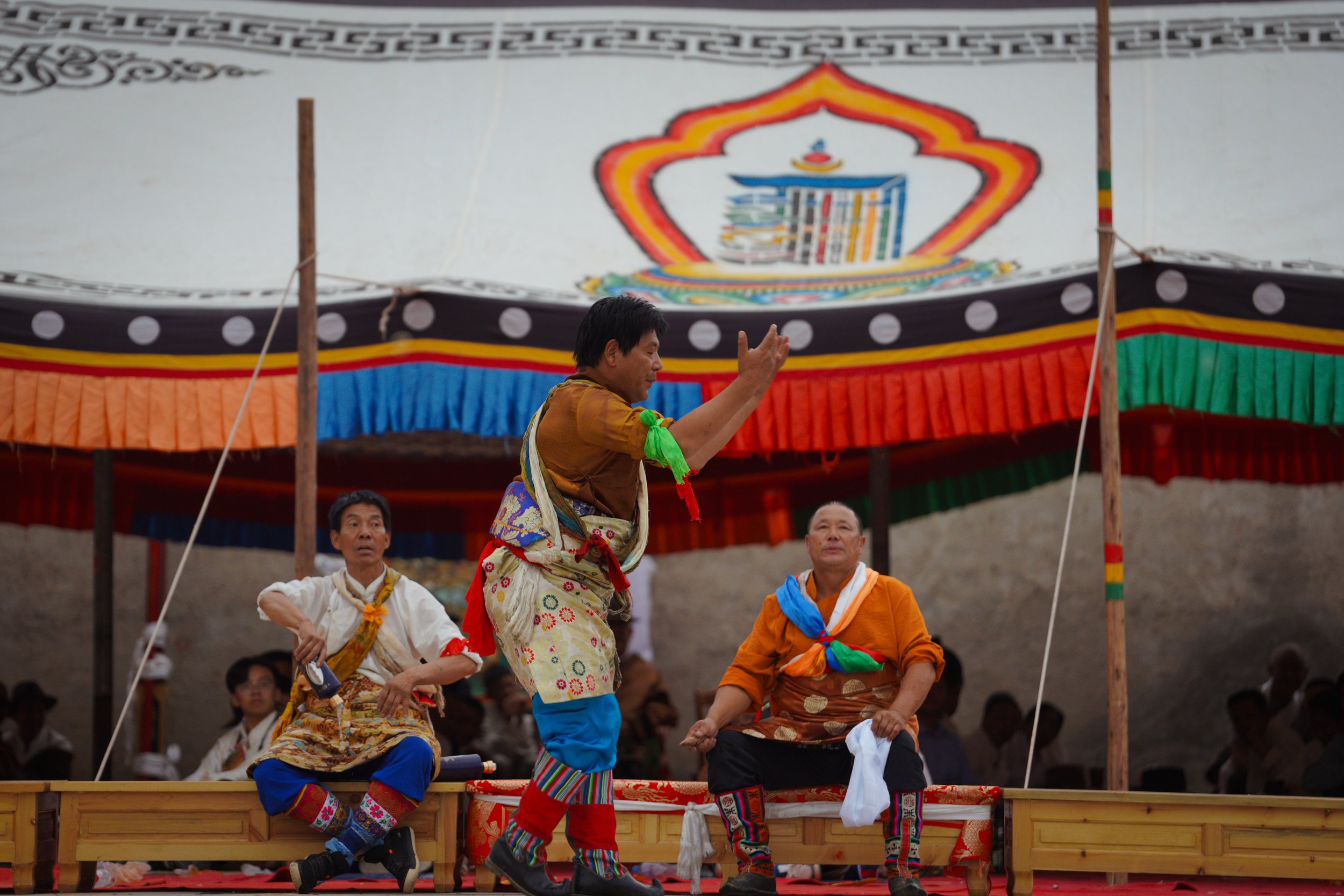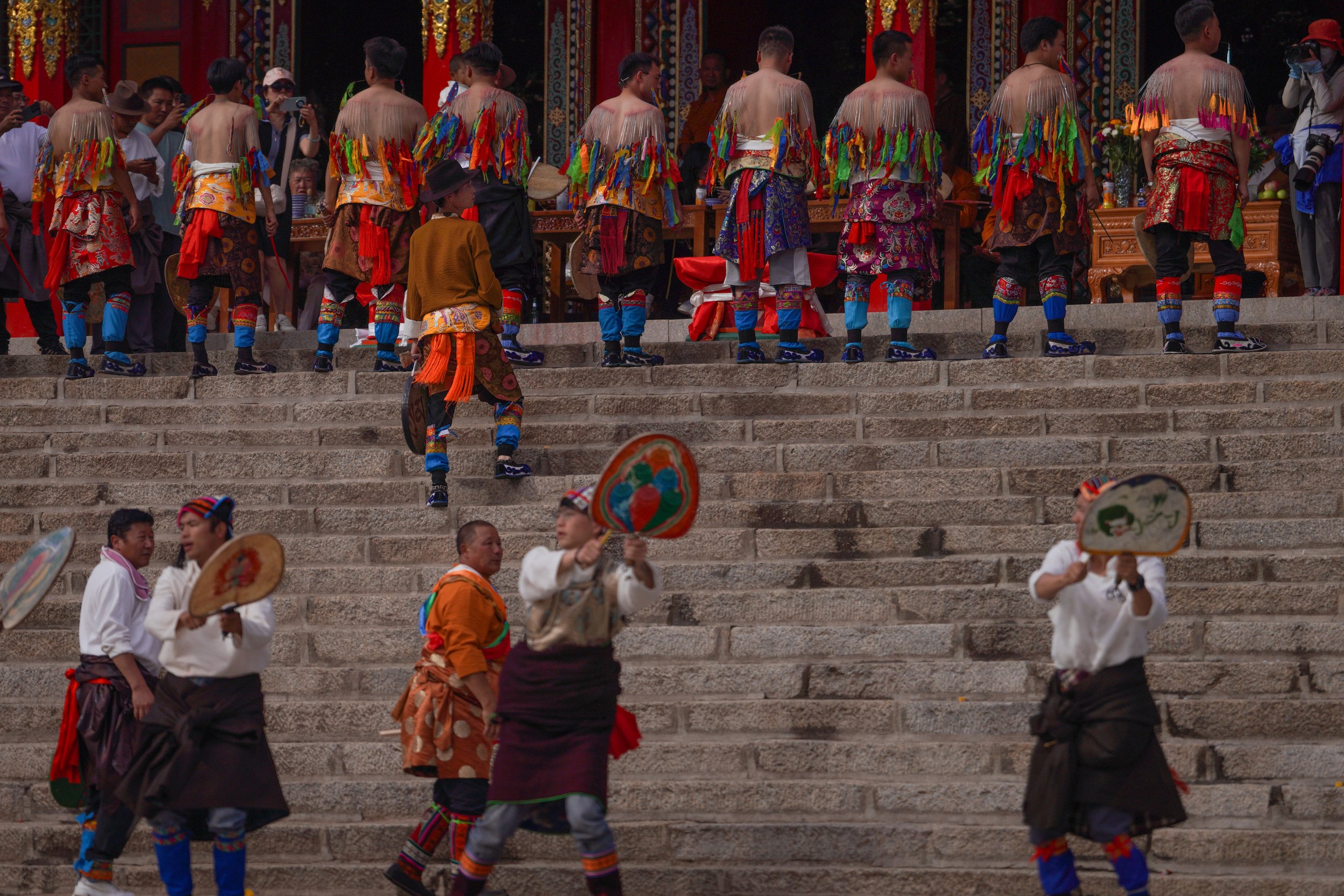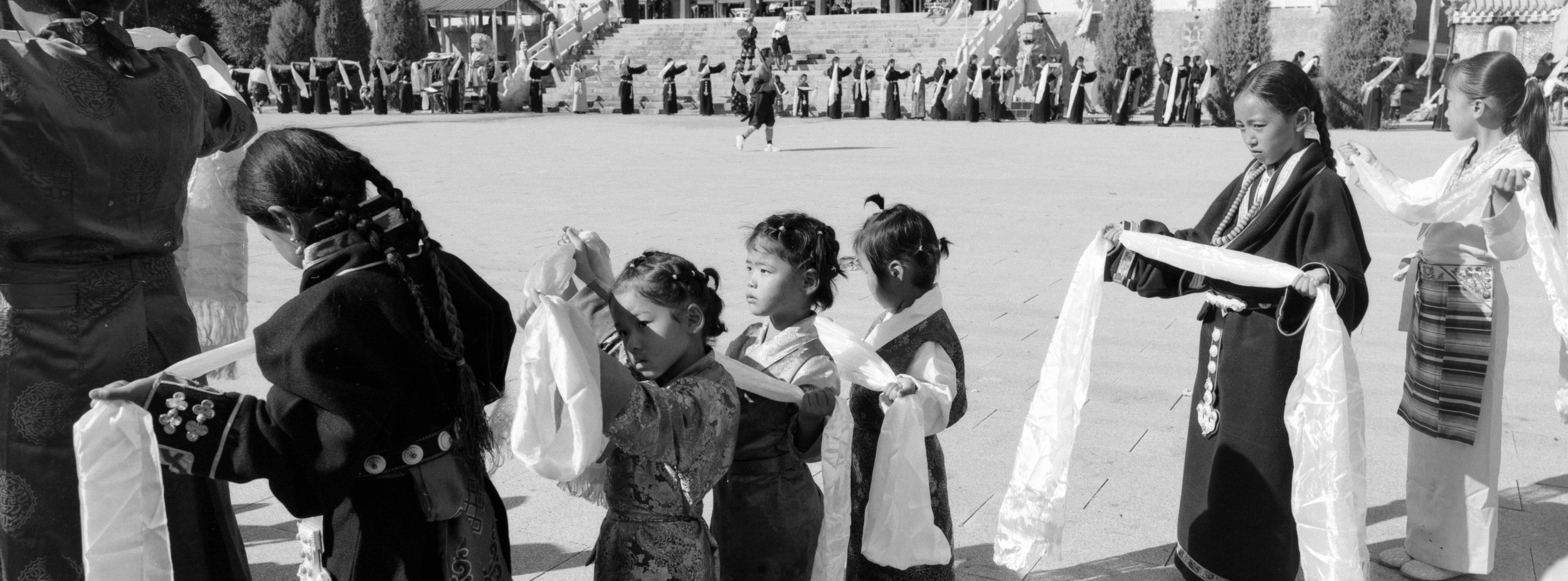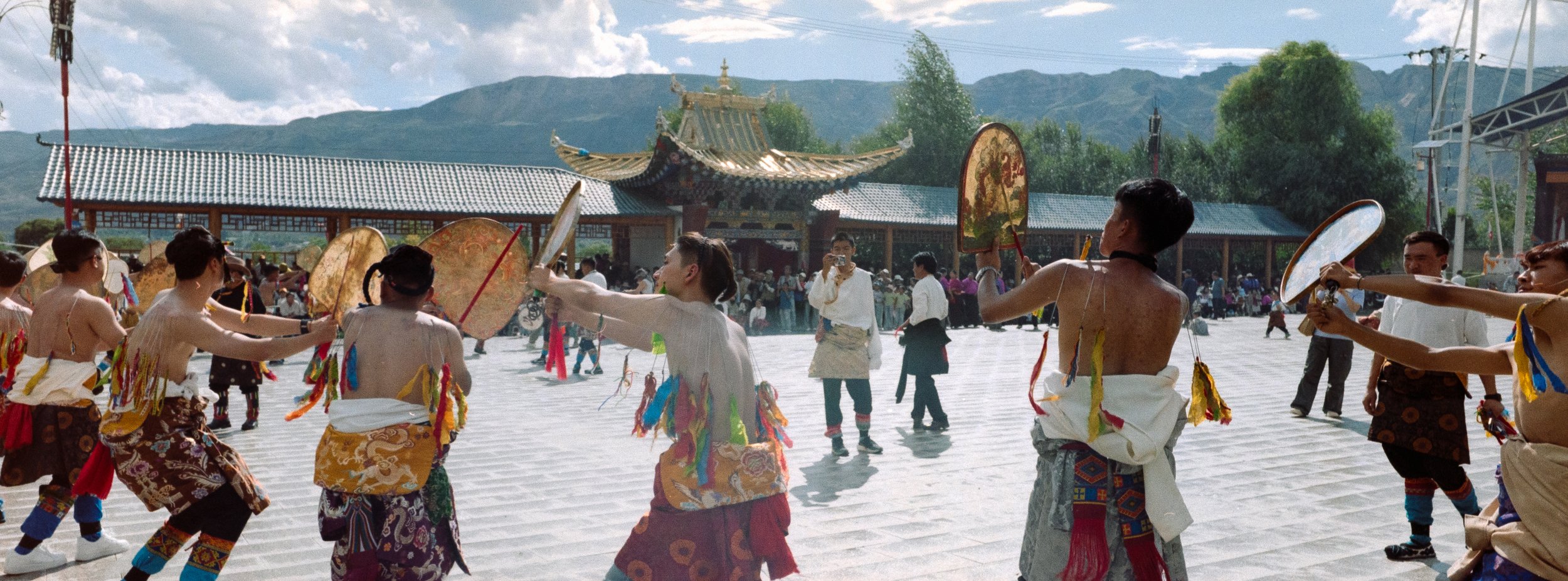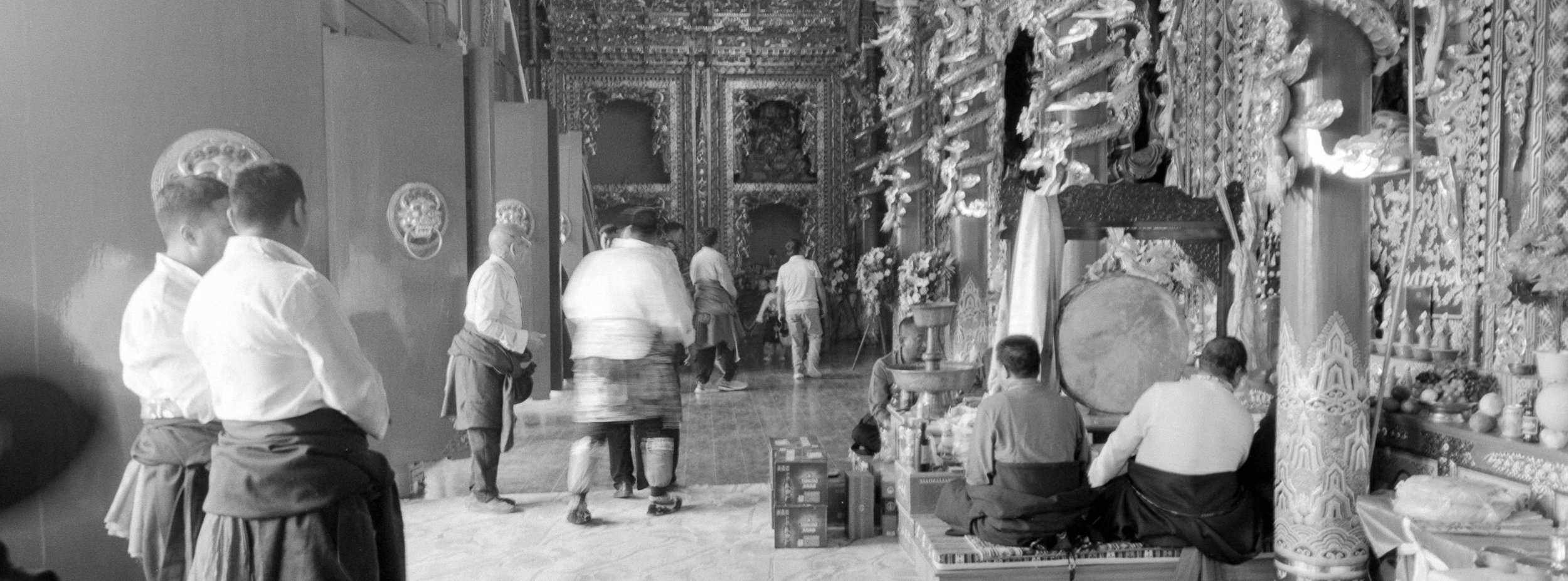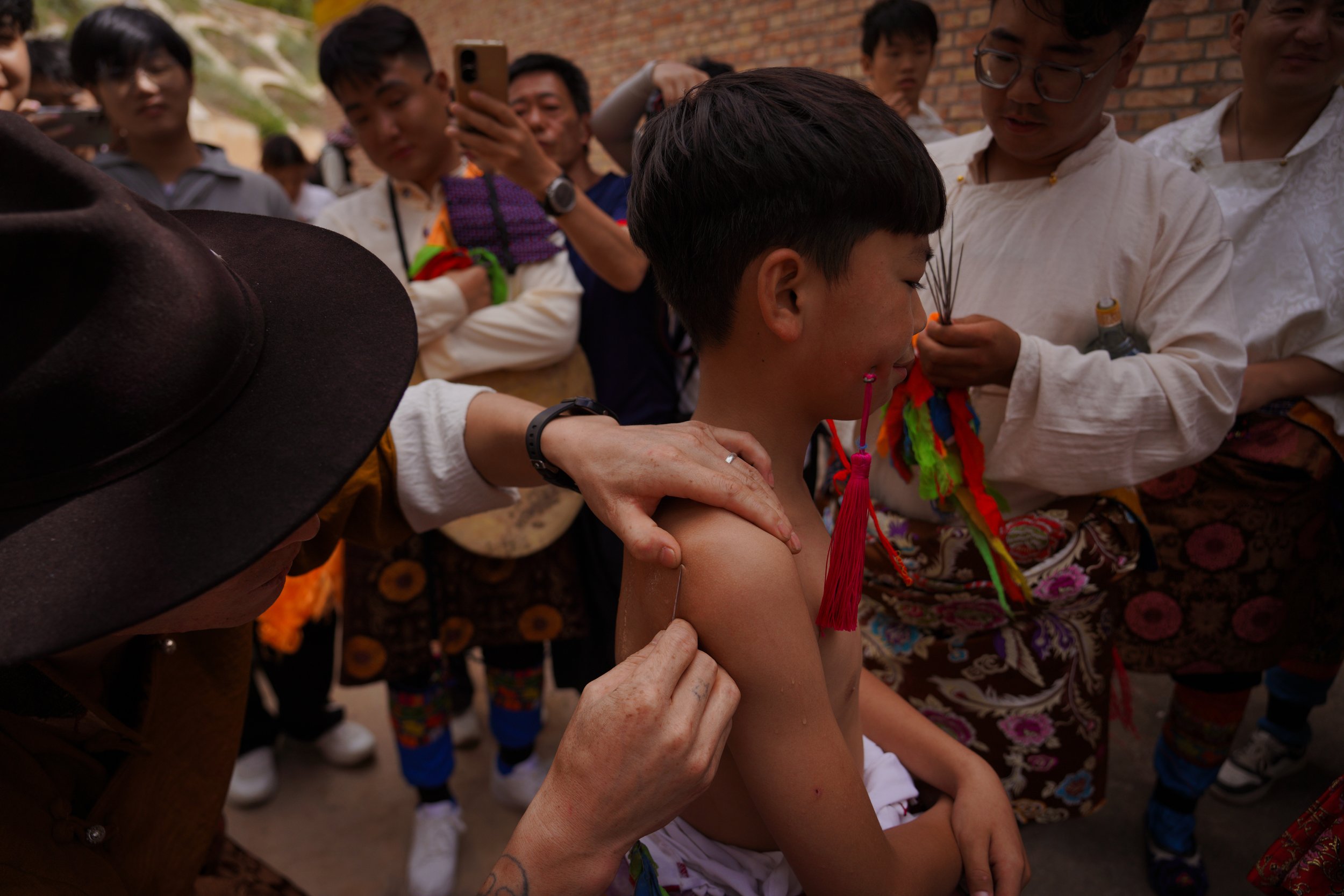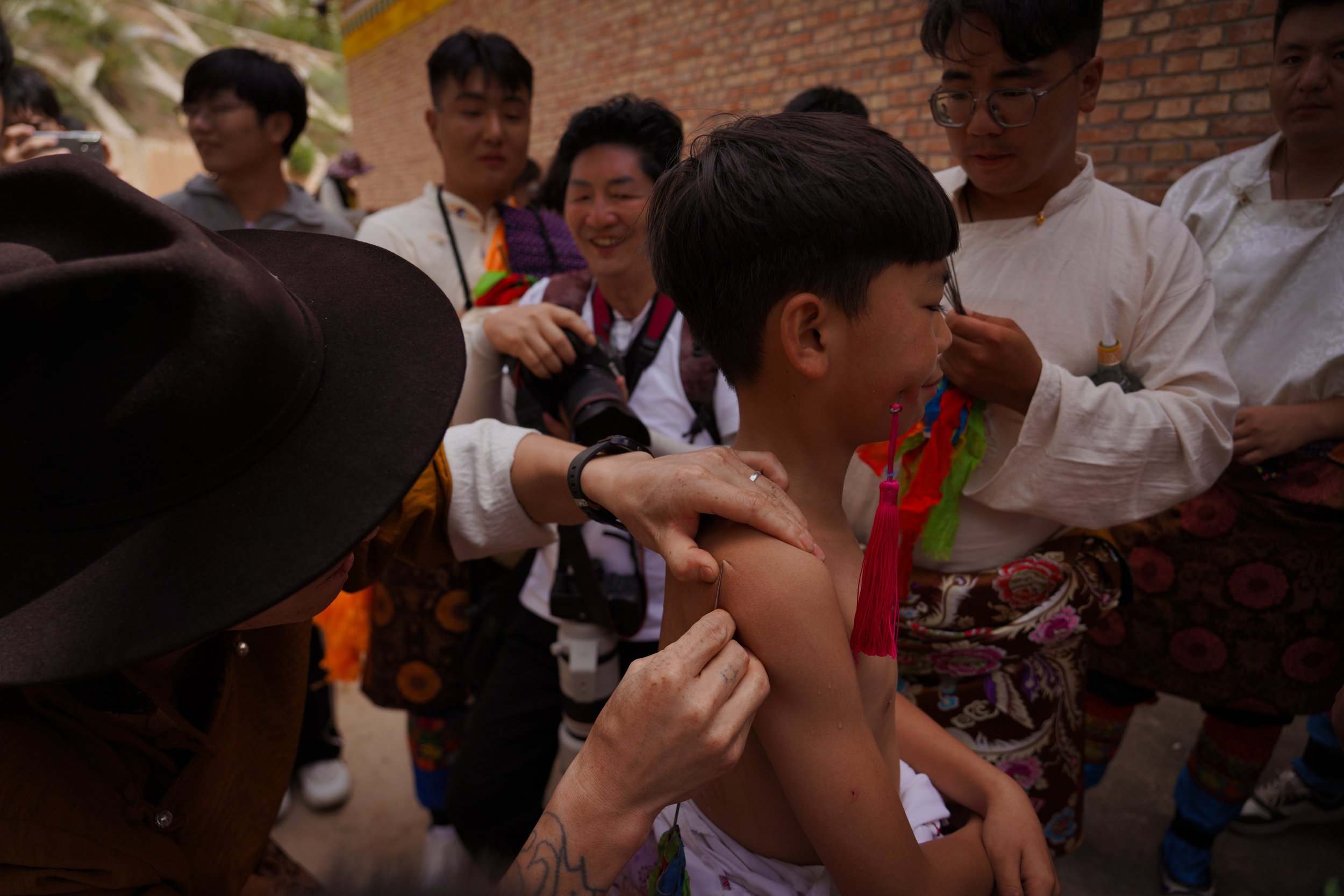
六月会 - 同仁市
Tongren Shaman Festival
浪加村 | Lang Jia Village
The Tongren Shaman Festival is celebrated each year from the 17th to the 25th of the sixth Chinese Lunar month. Each village in this region of the Qinghai province will take turns hosting and performing traditions like 背钎 (Bei Qian), 口钎 (Kou Qian), 开山 (Kai Shan) and dances such as 神舞 (Shen Wu), 军舞 (Jun Wu), and 龙舞 (Long Wu).
Villagers in the host village will participate in these traditions voluntarily, dancing for many hours of the day. They also prepare sacrifices for the gods, which are burned throughout the celebrations.
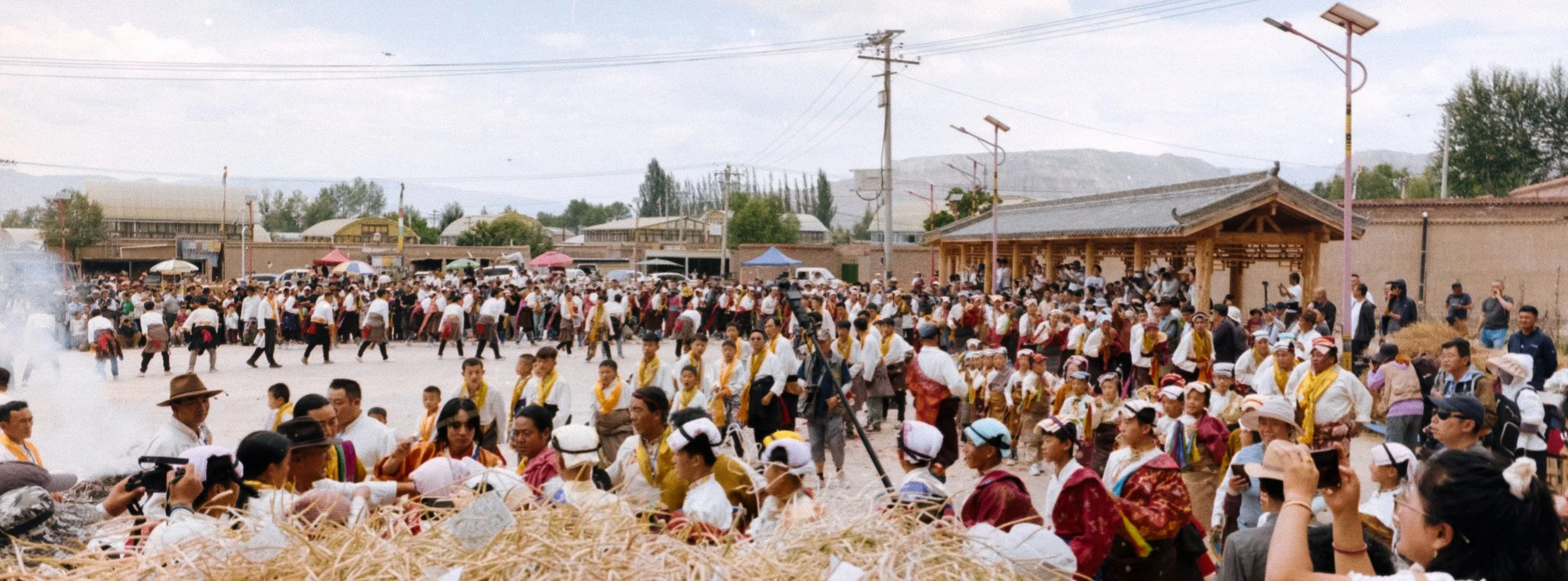
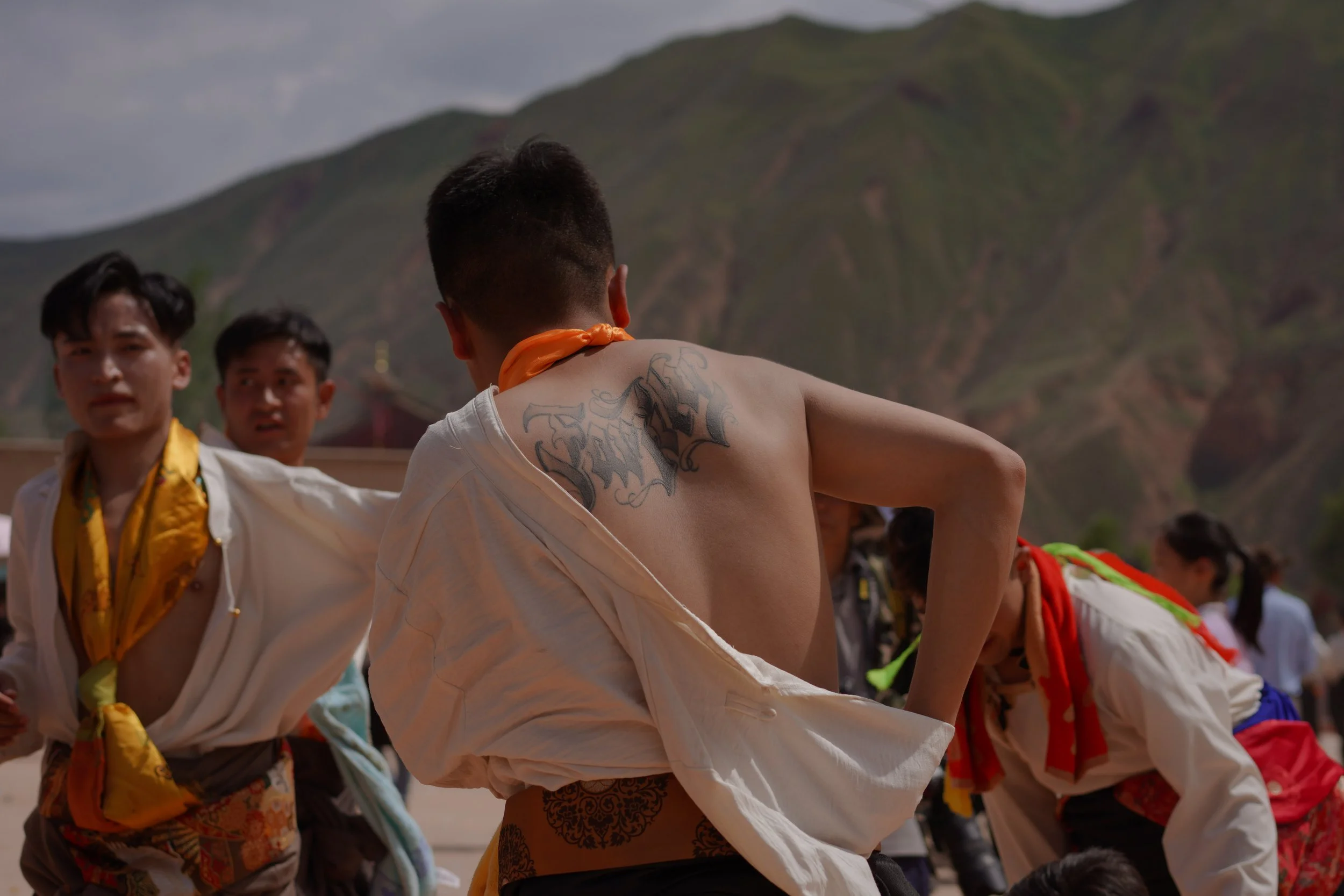
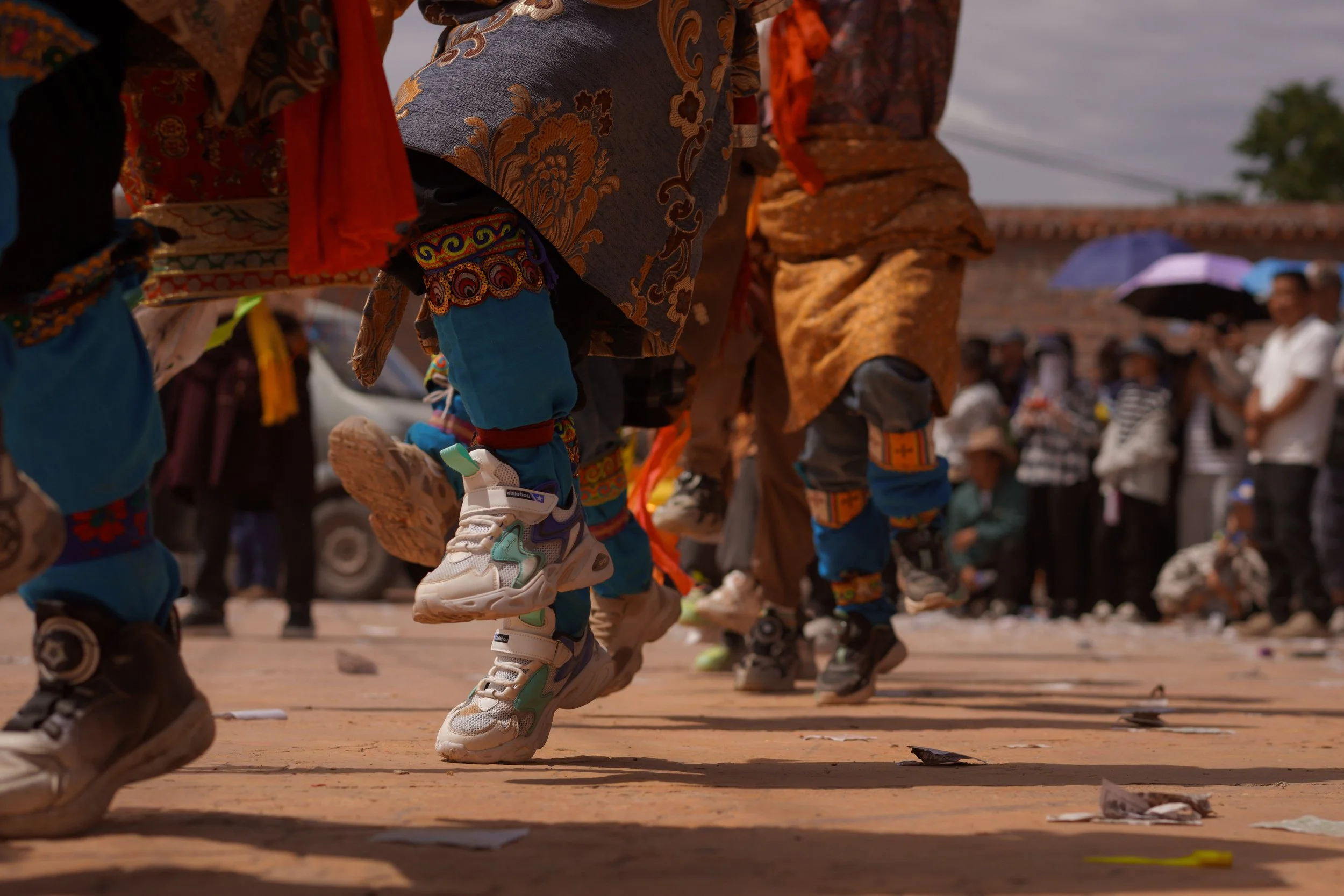
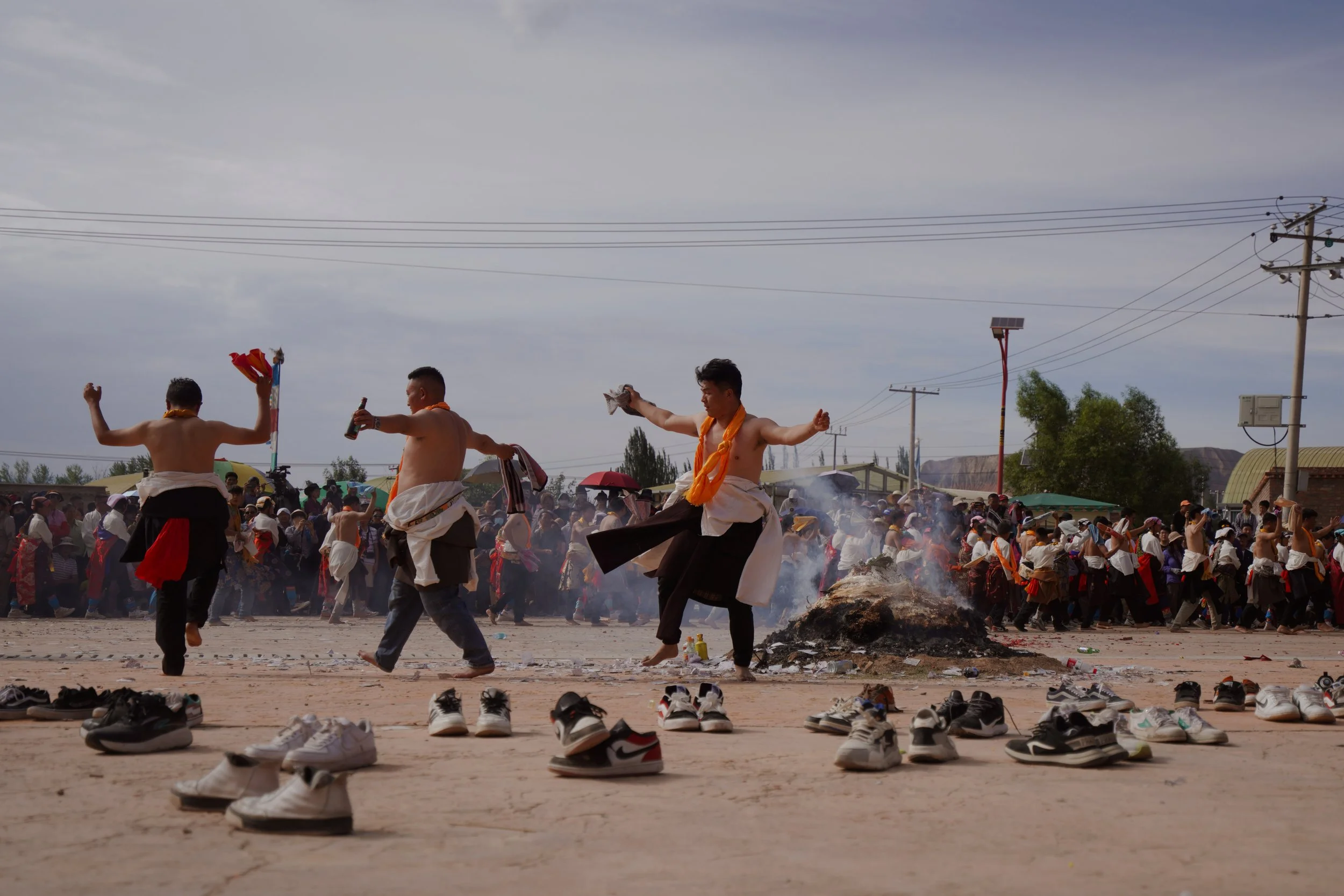
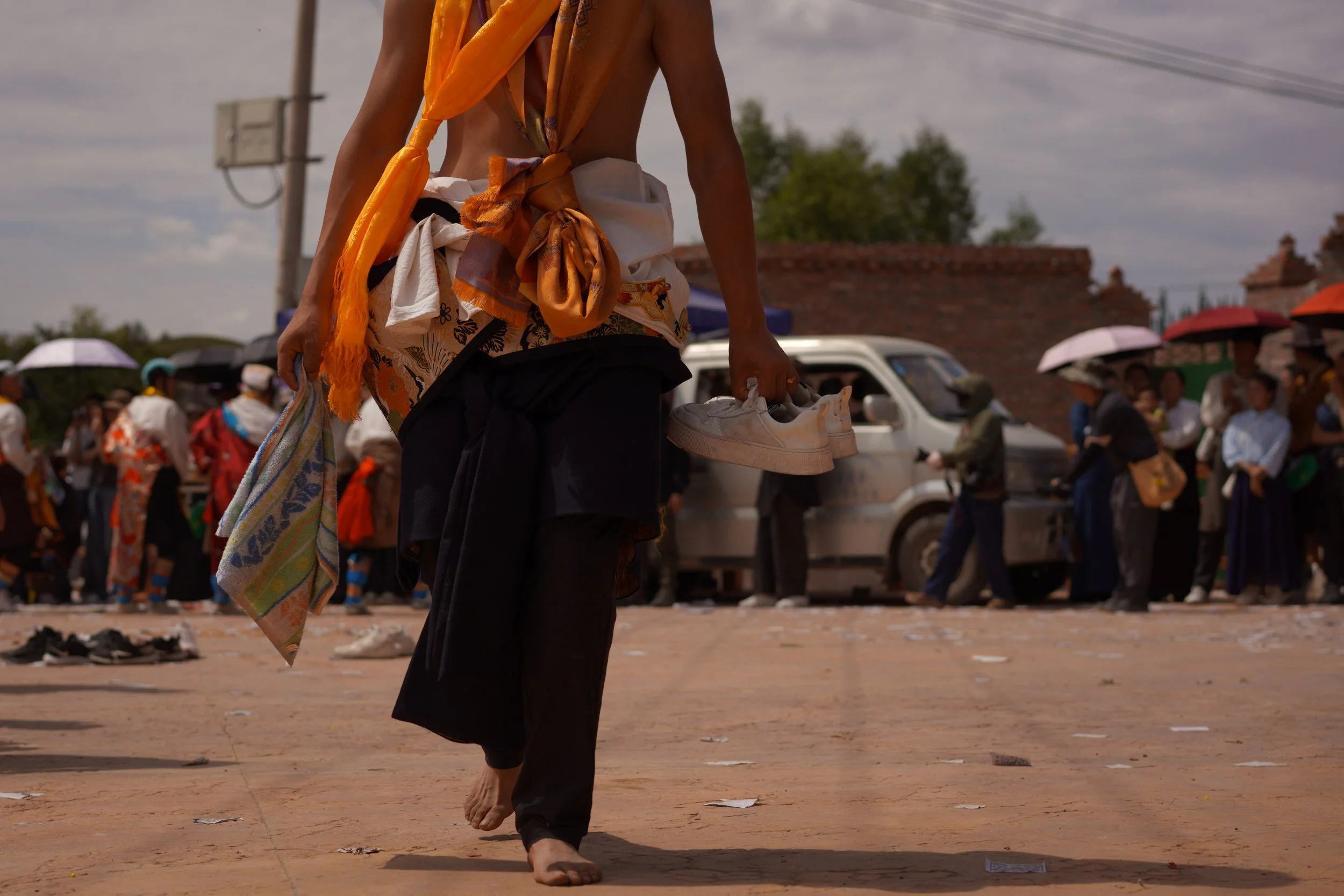
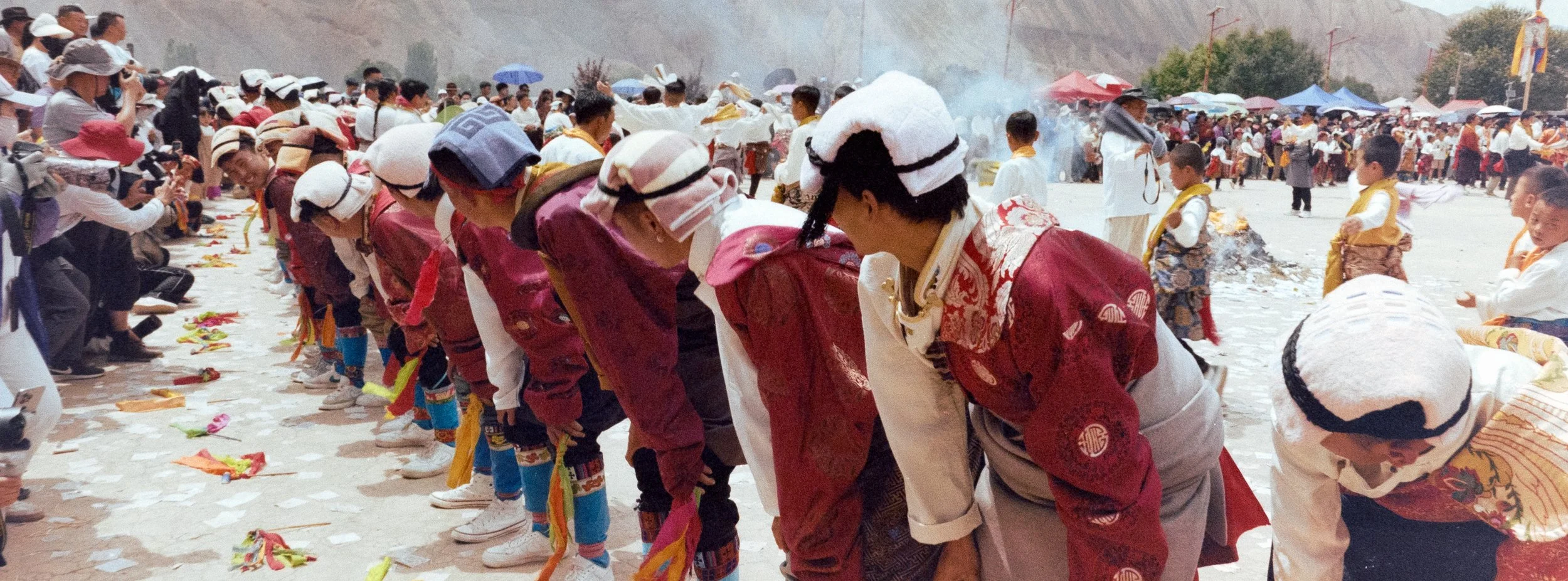
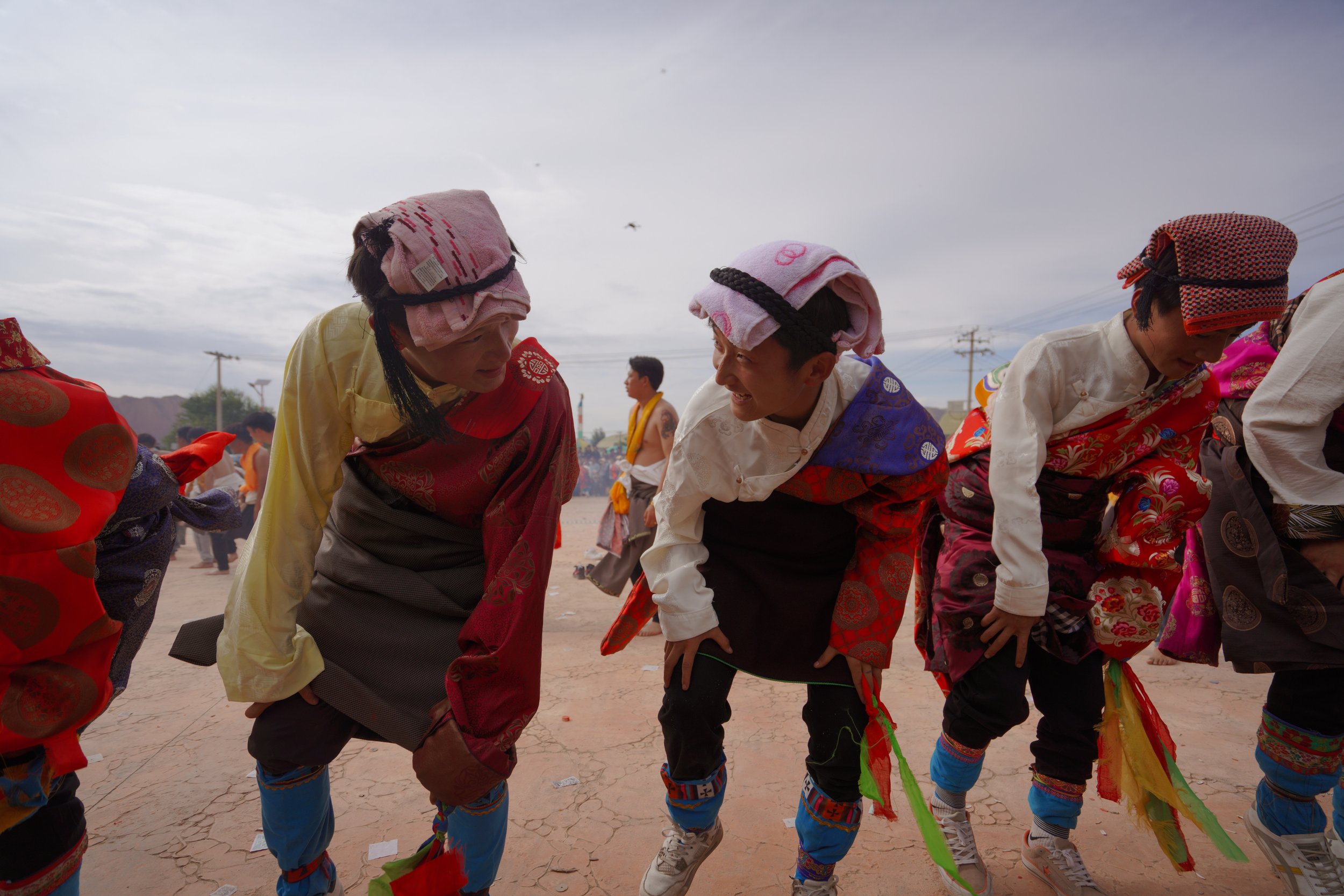
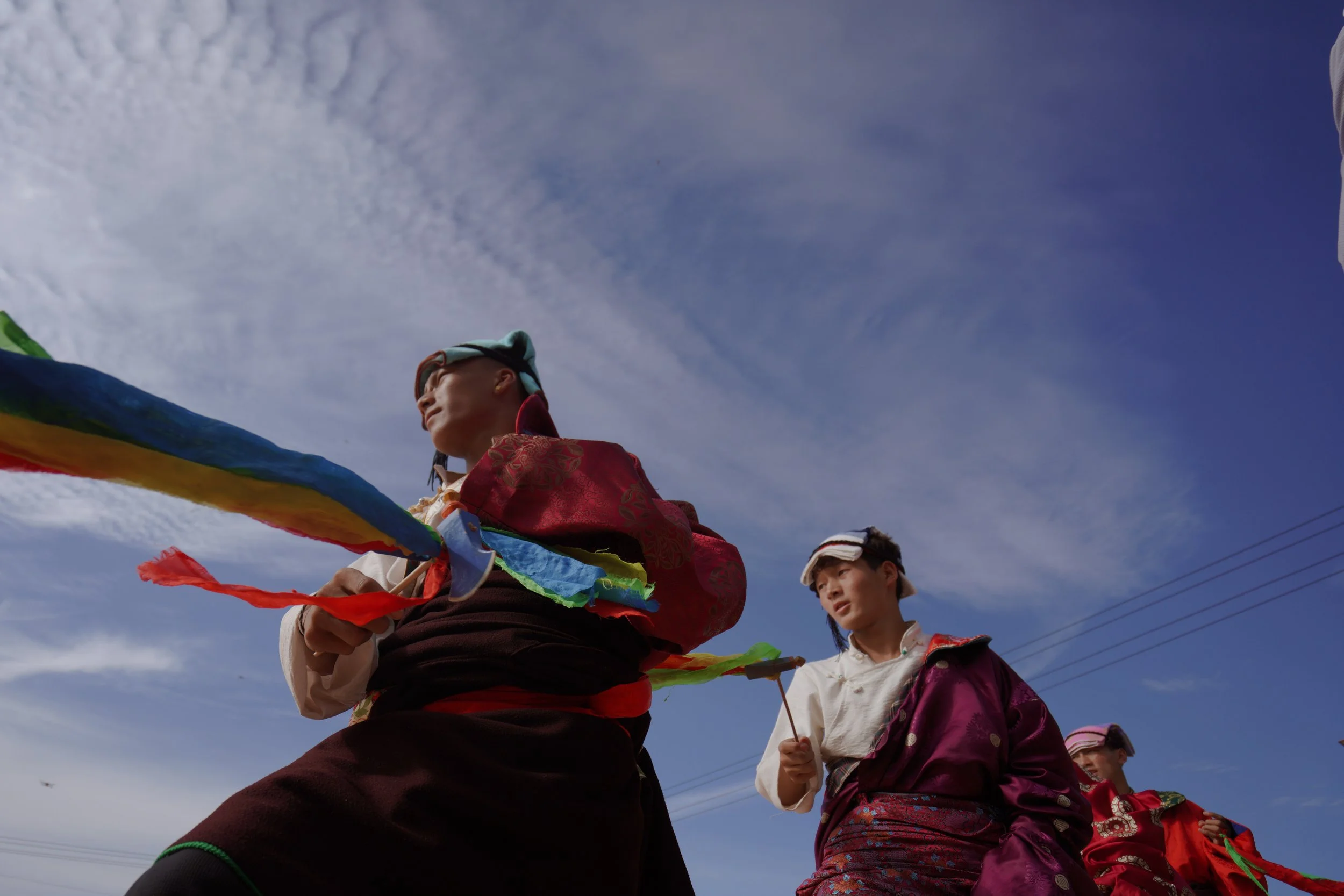
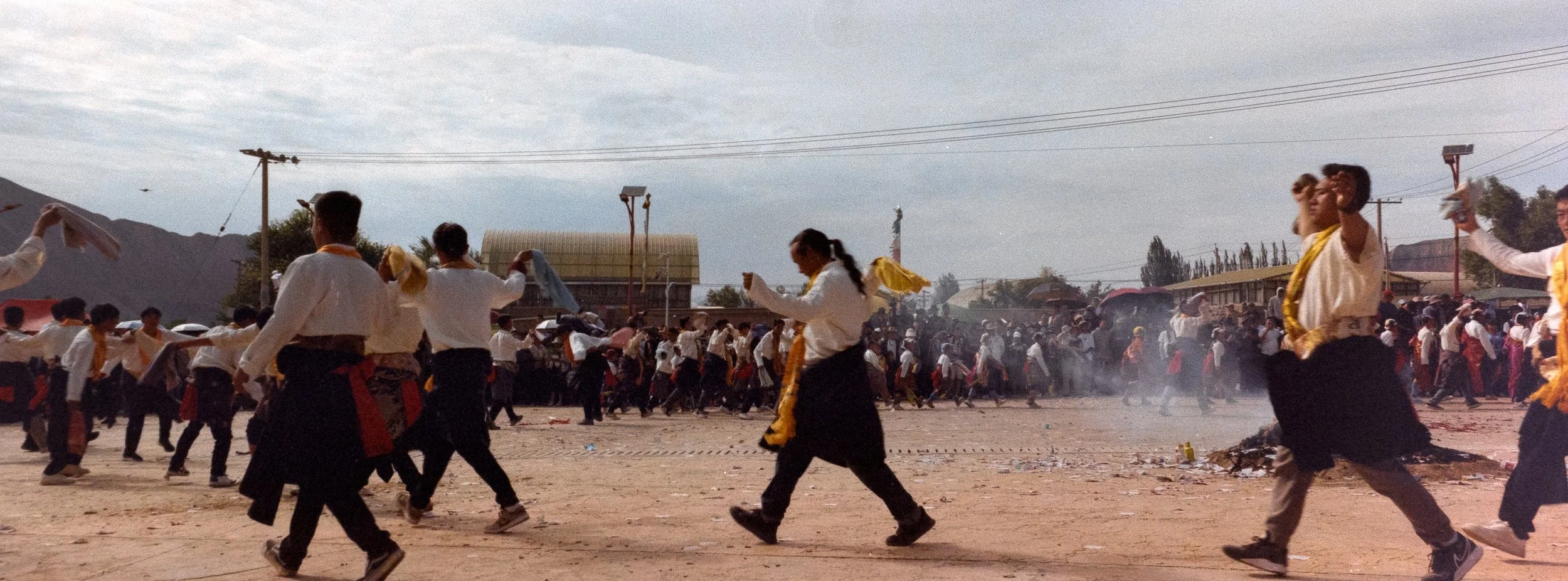
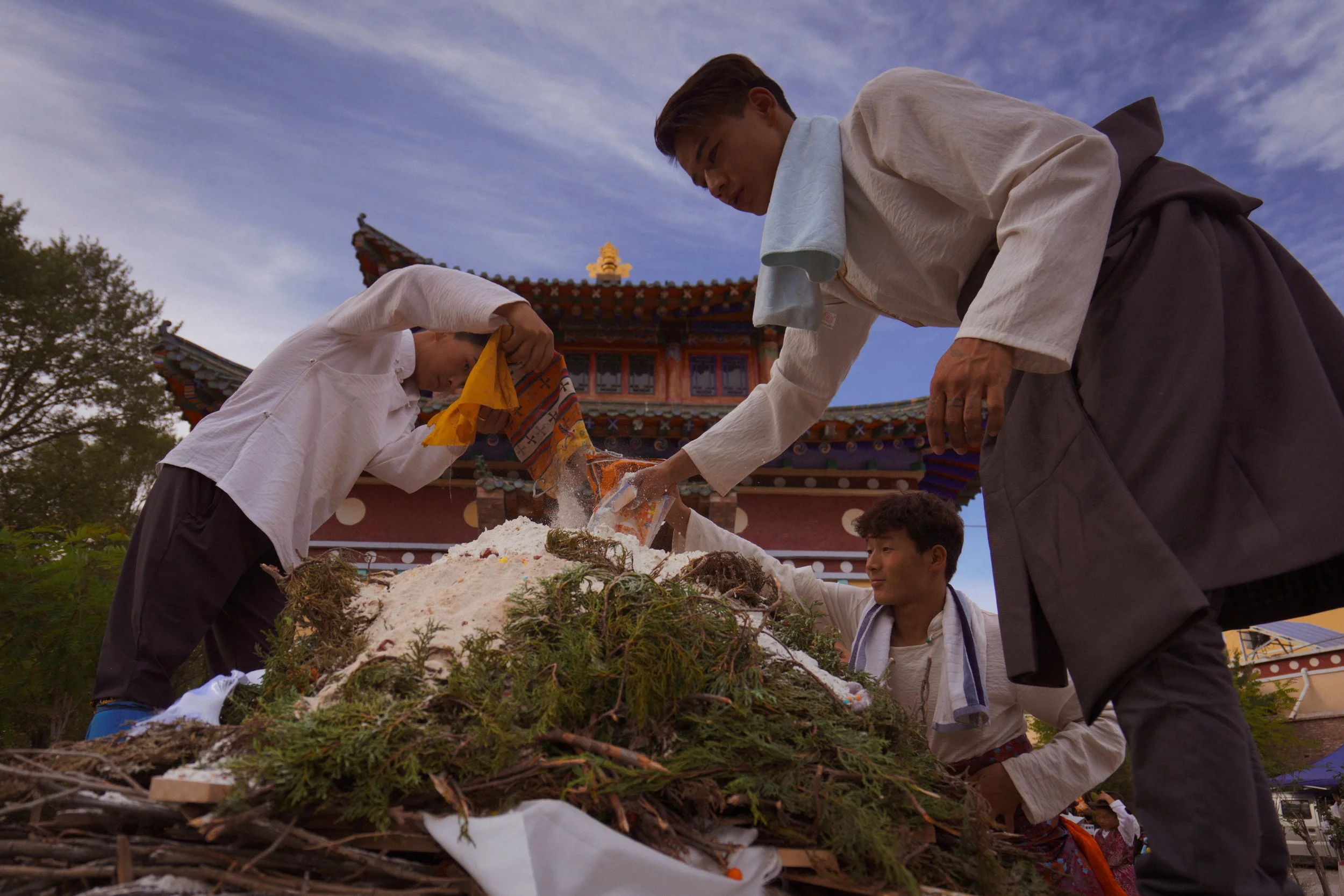

The local shamans, known as Lawas, lead the celebrations by acting as the connection between the villagers and the gods. They take on the personalities of the gods during the festival and lead traditions such as 开山 (Kai Shan), which directly translates to the opening of the mountain. It is a blood sacrifice taken on by the hosting Lawa, who will cut his scalp with a knife to sacrifice his blood to the gods.
The Lang Jia Village also performs the tradition of the 生殖崇拜舞 - a dance to worship and bless procreation. It's one of the times when men and women will participate together in the festival.


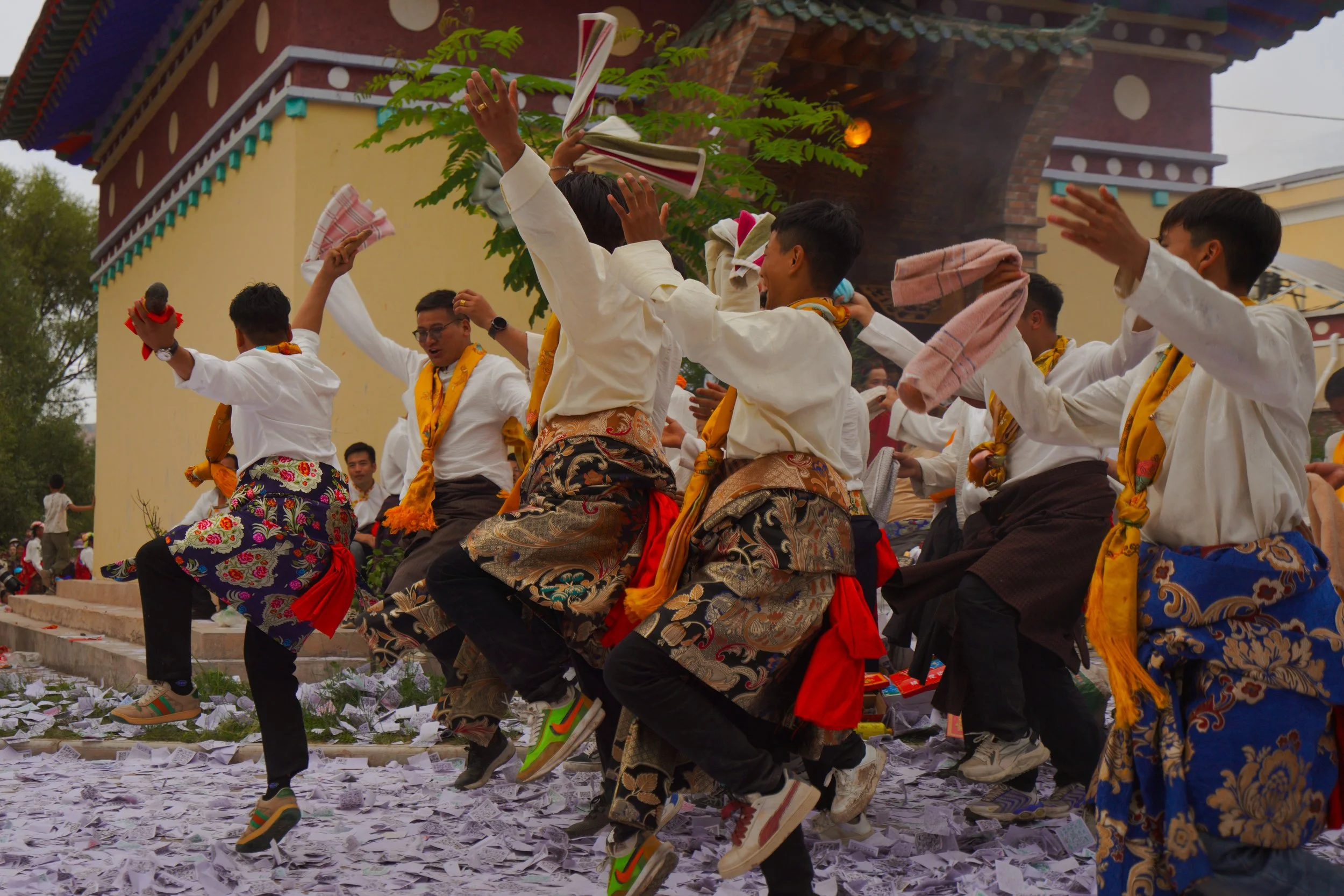
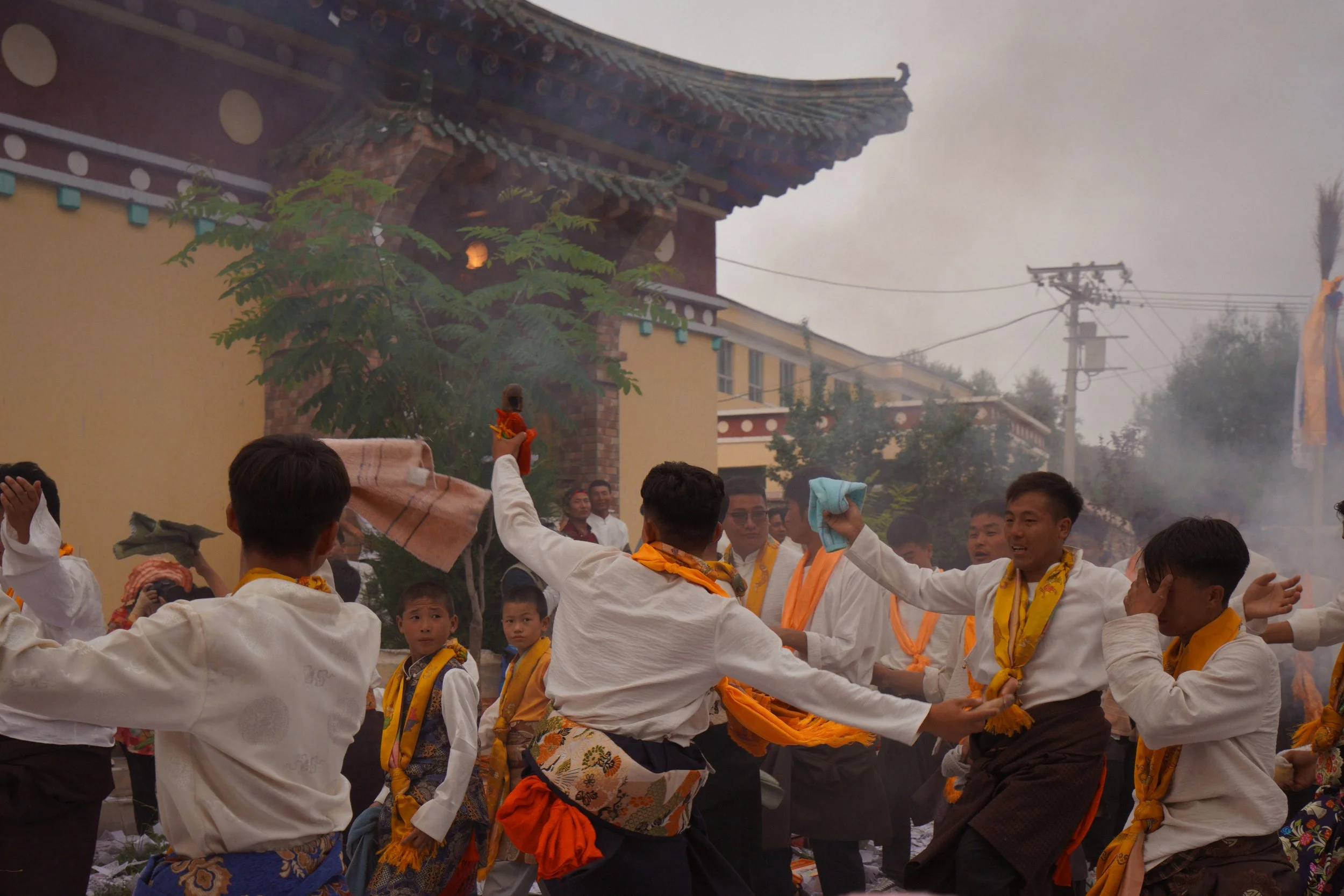
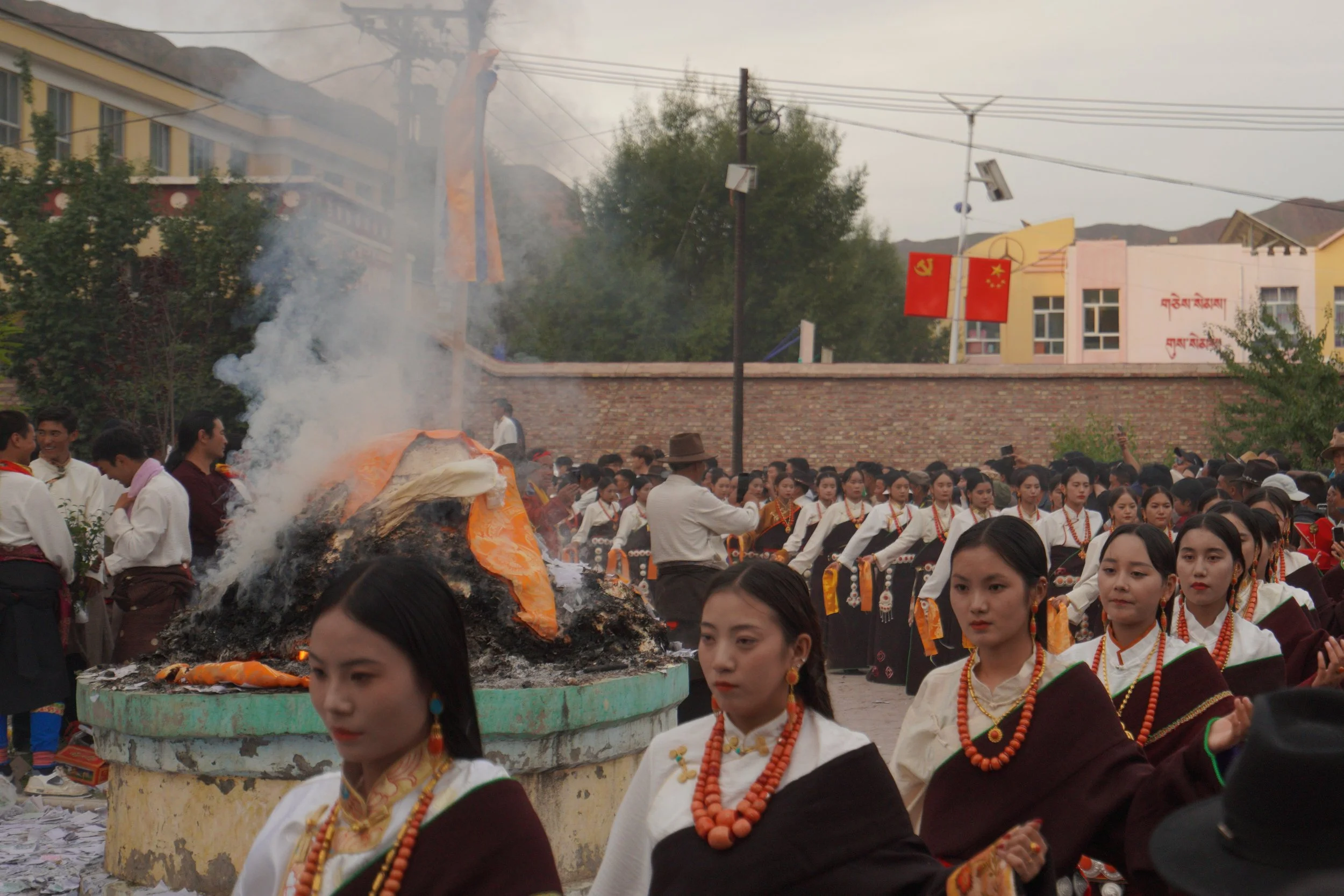
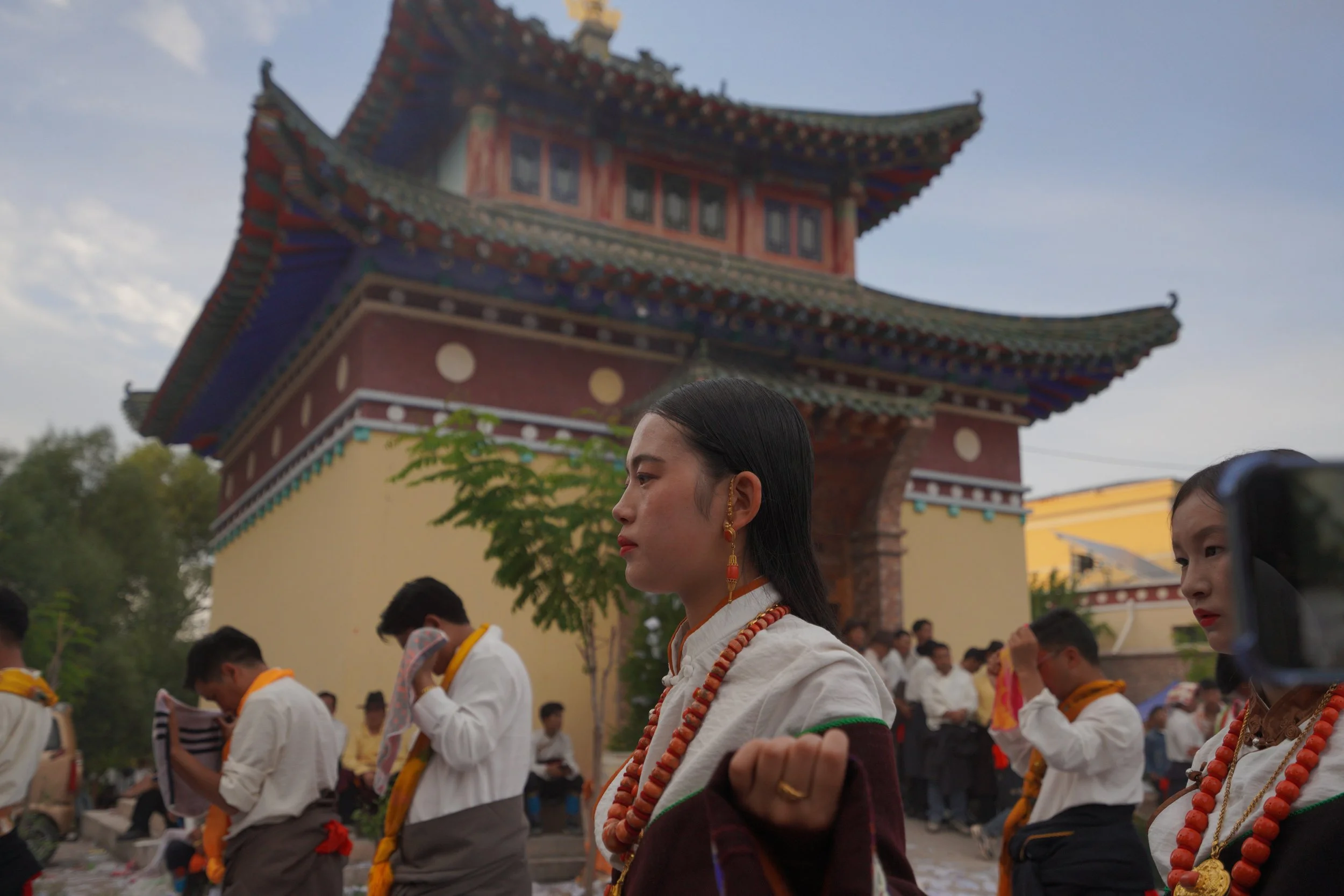
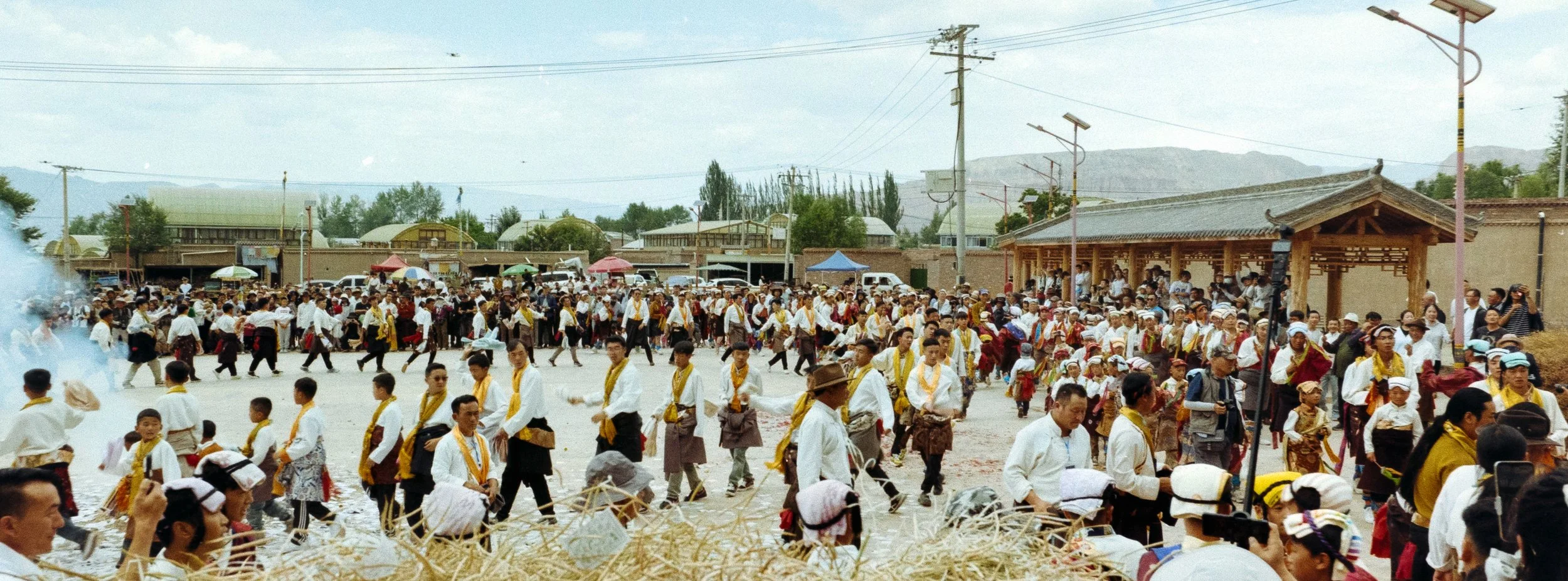
哈拉巴图村 | HA LA BA TU VILLAGE
During the performances held by Ha La Ba Tu Village, a 唐卡 (Thangka) was carried out and hung in the village square before celebrations began. A villager I spoke to said that to understand the lore behind each village's traditions, you must be able to interpret the Thangka. Alcohol also played an important role in offering sacrifices to the gods and was sprayed by both the villagers and the Lawas.
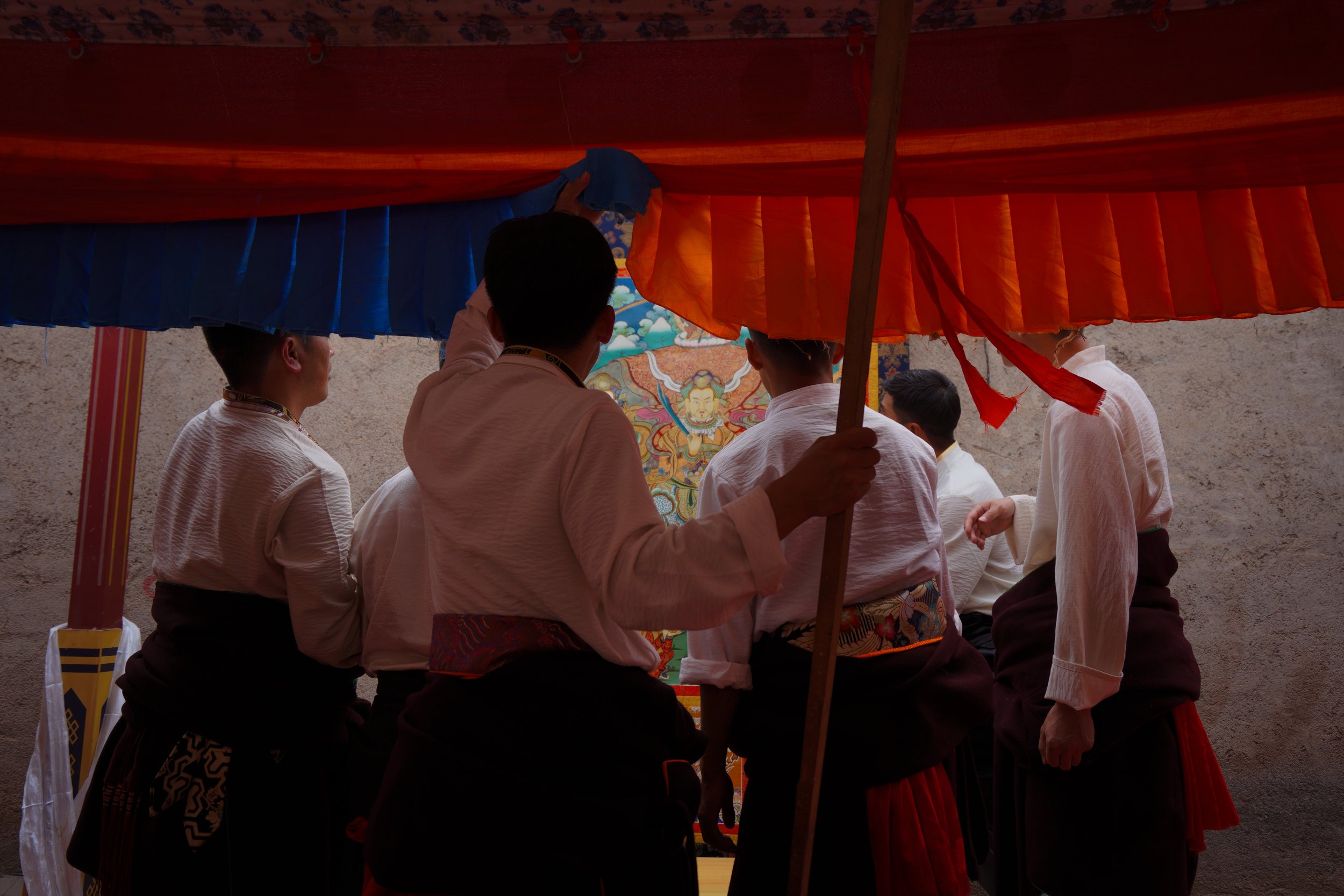
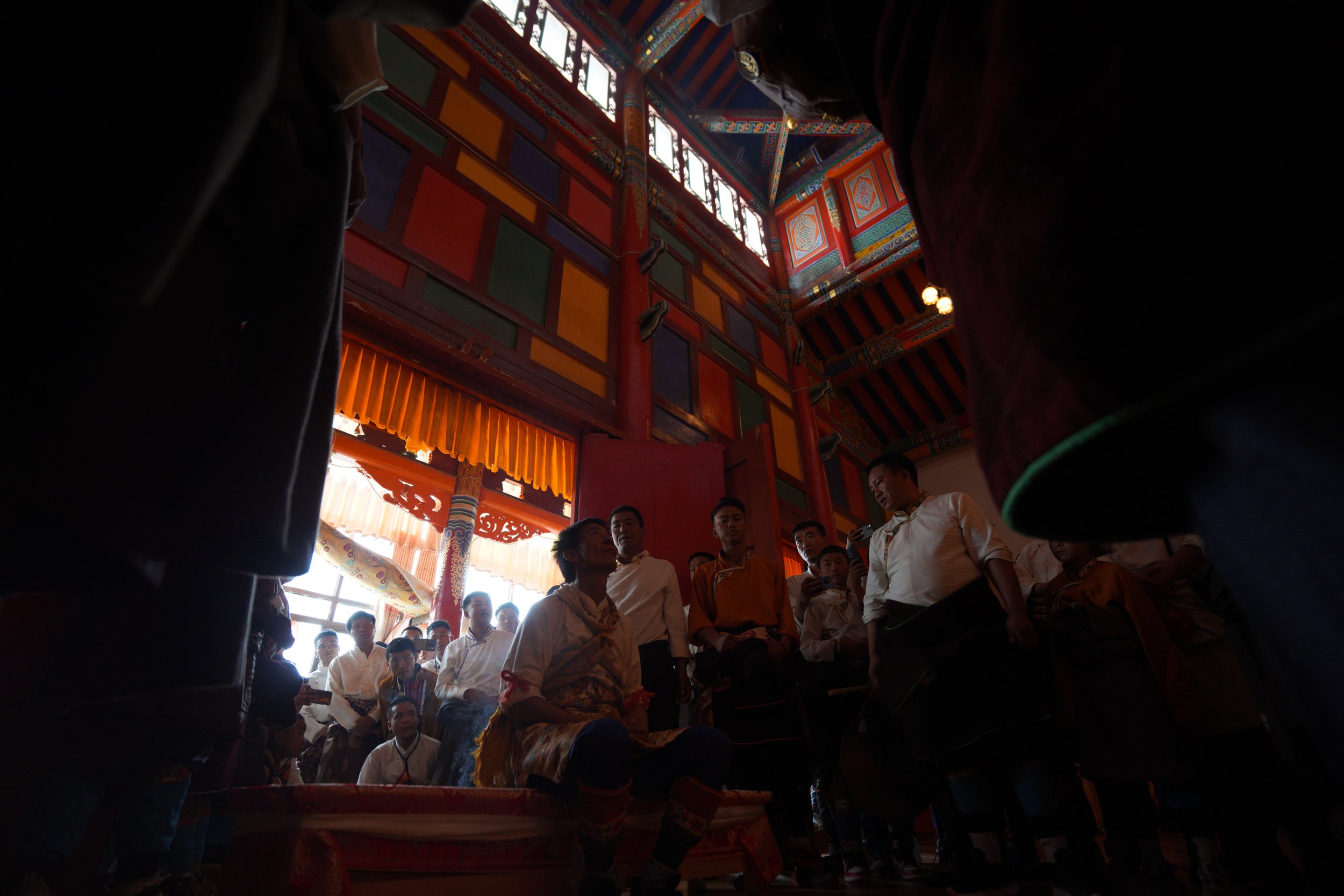

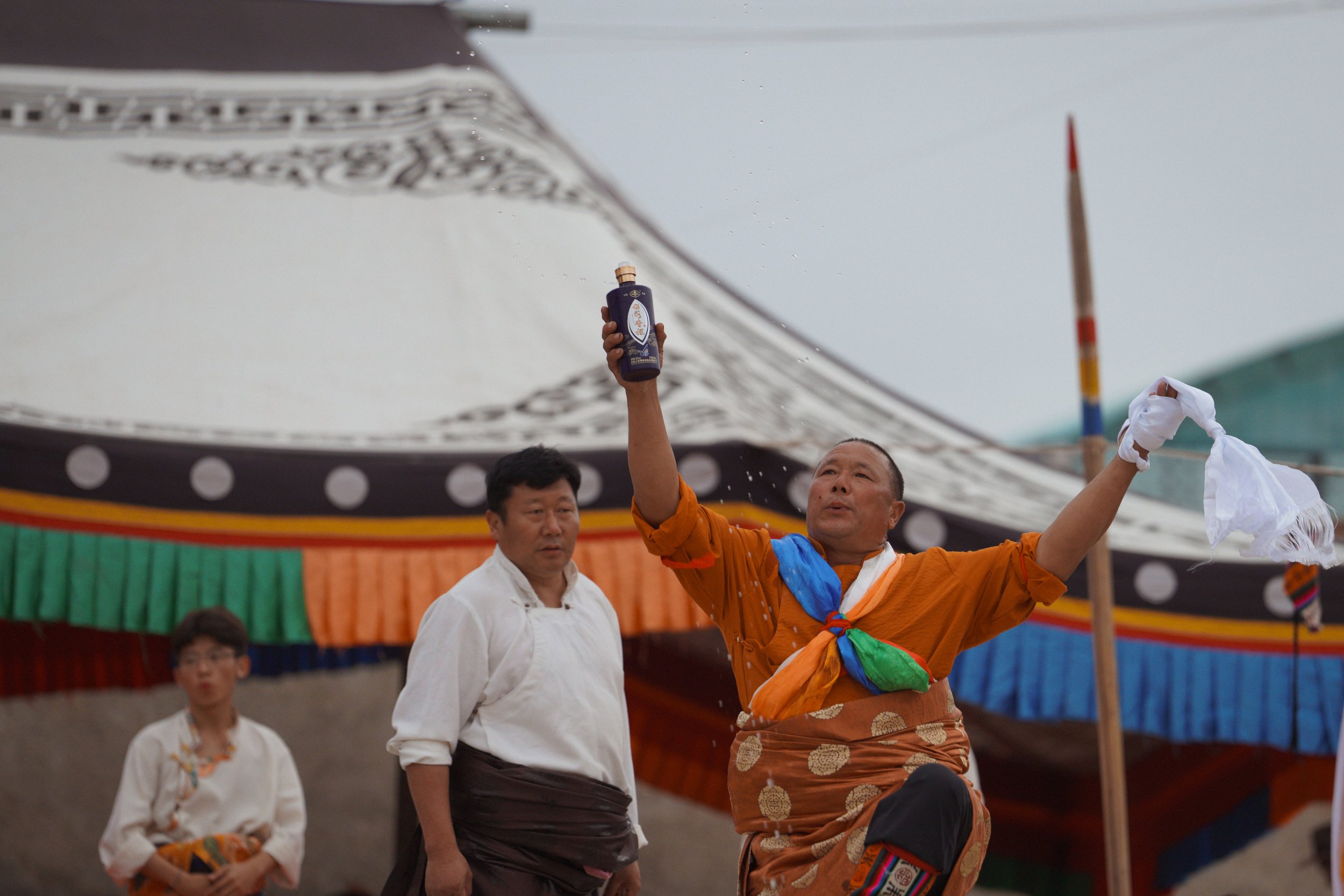

The Ha La Ba Tu village host Lawa was joined by the two Lawas from two ally villages. Together, they hosted a day of rituals, including a gathering where an elder discussed the village's current state and history. Although this was conducted in a dialect I could not understand, one of the villagers explained that they often warned about the use of alcohol and other such affairs conducted by the villagers. The elder's speech was often interrupted by laughter and the Lawas circled the villagers telling them to pay attention.
The villagers danced the 神舞 (Shen Wu) or the Dance of the Gods while the Lawas oversaw them.
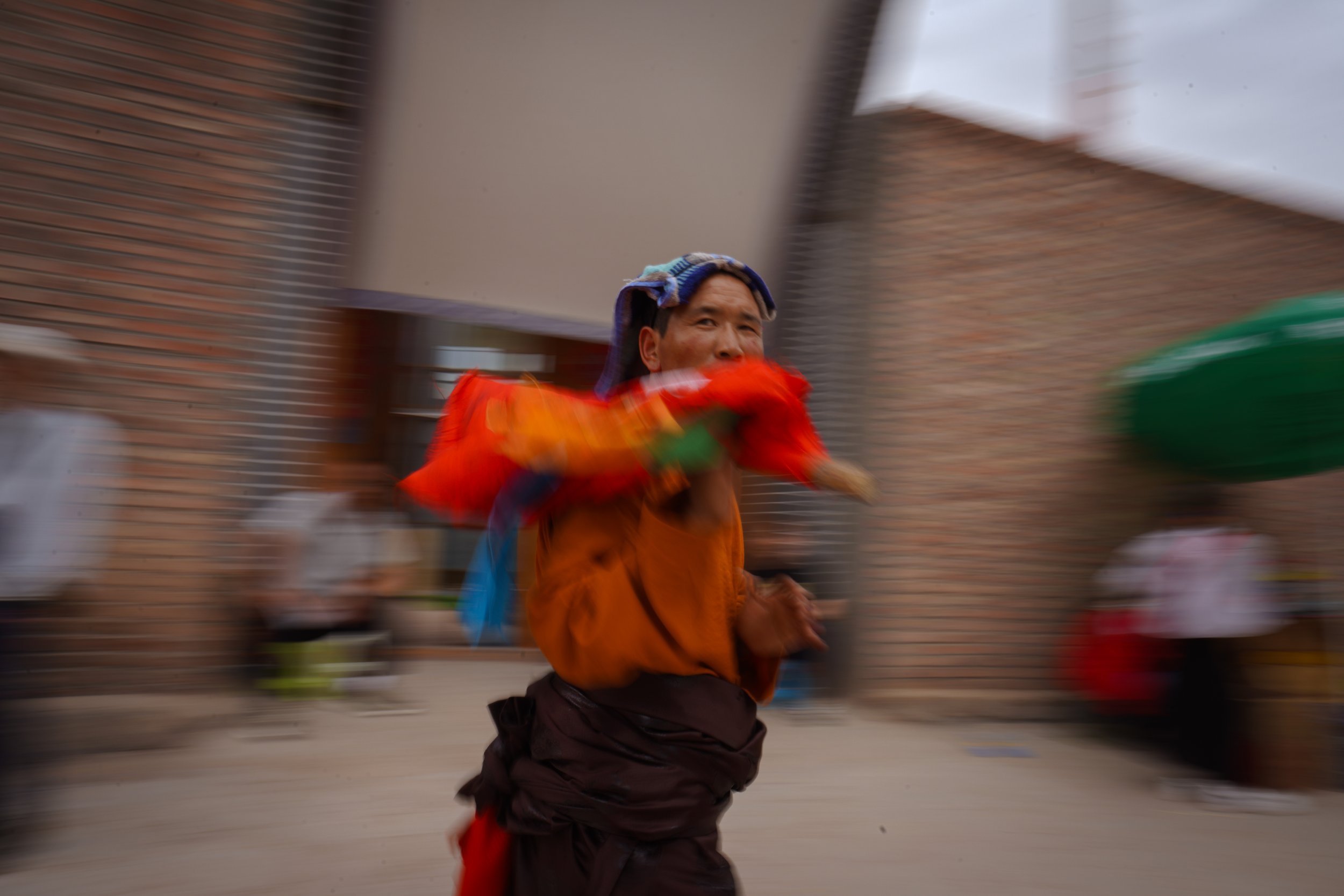


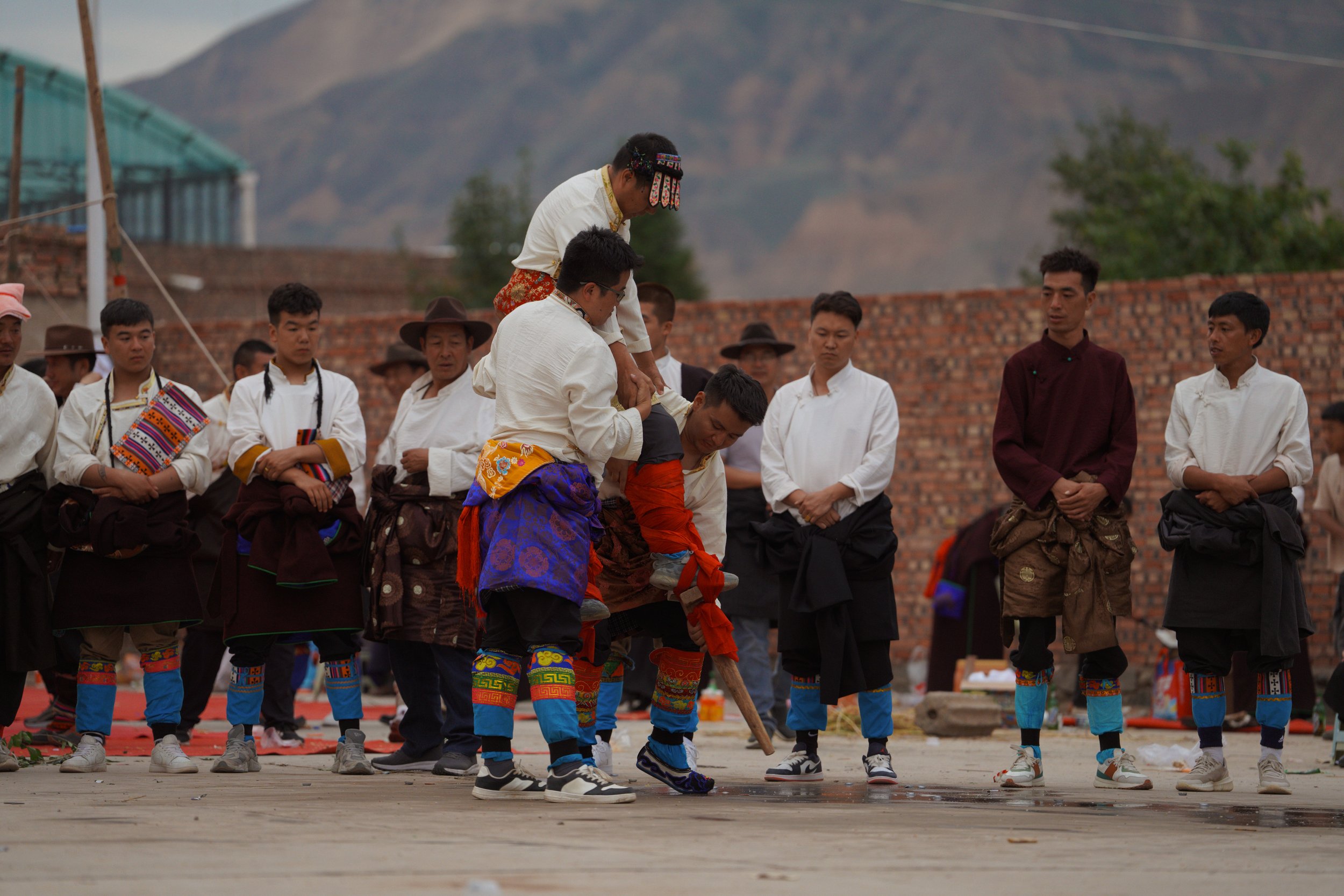
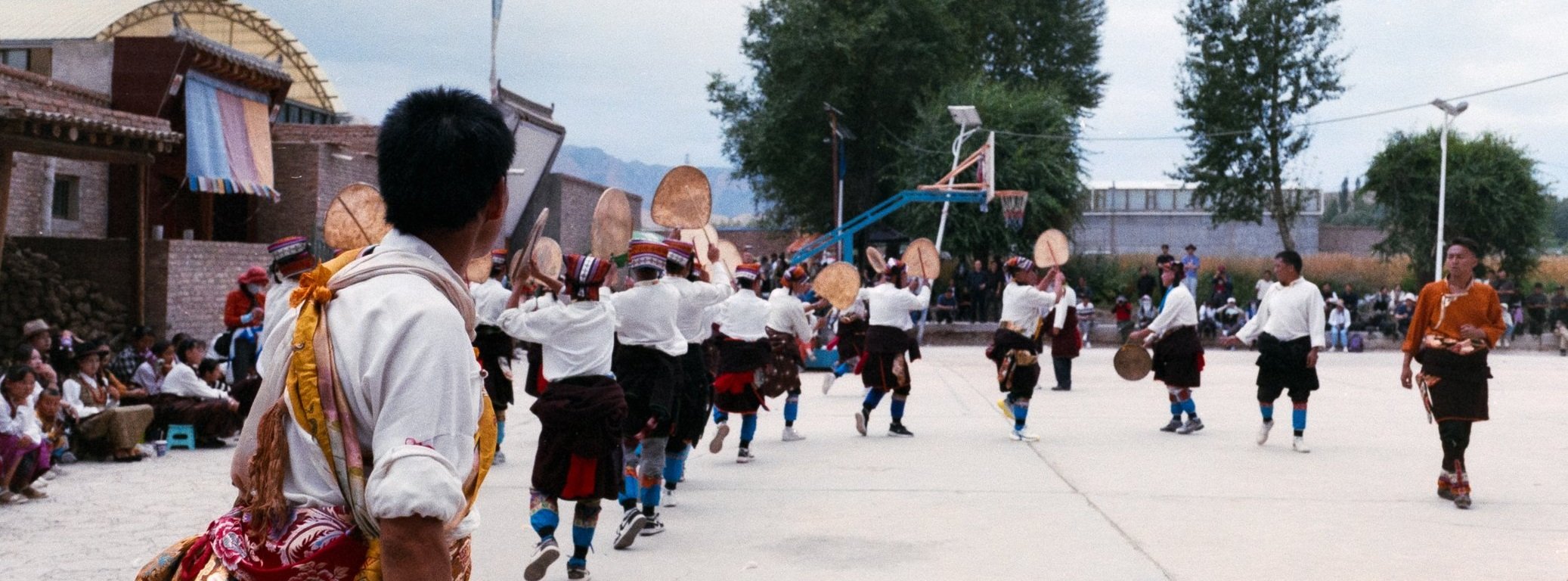
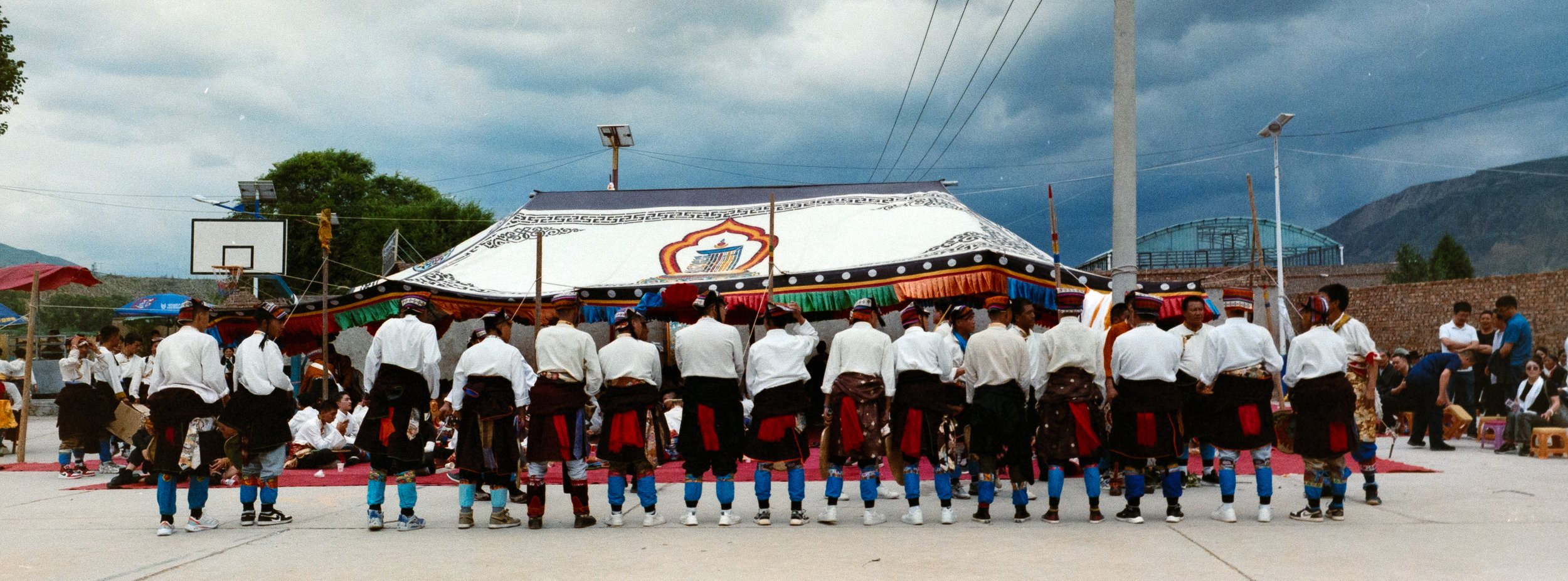


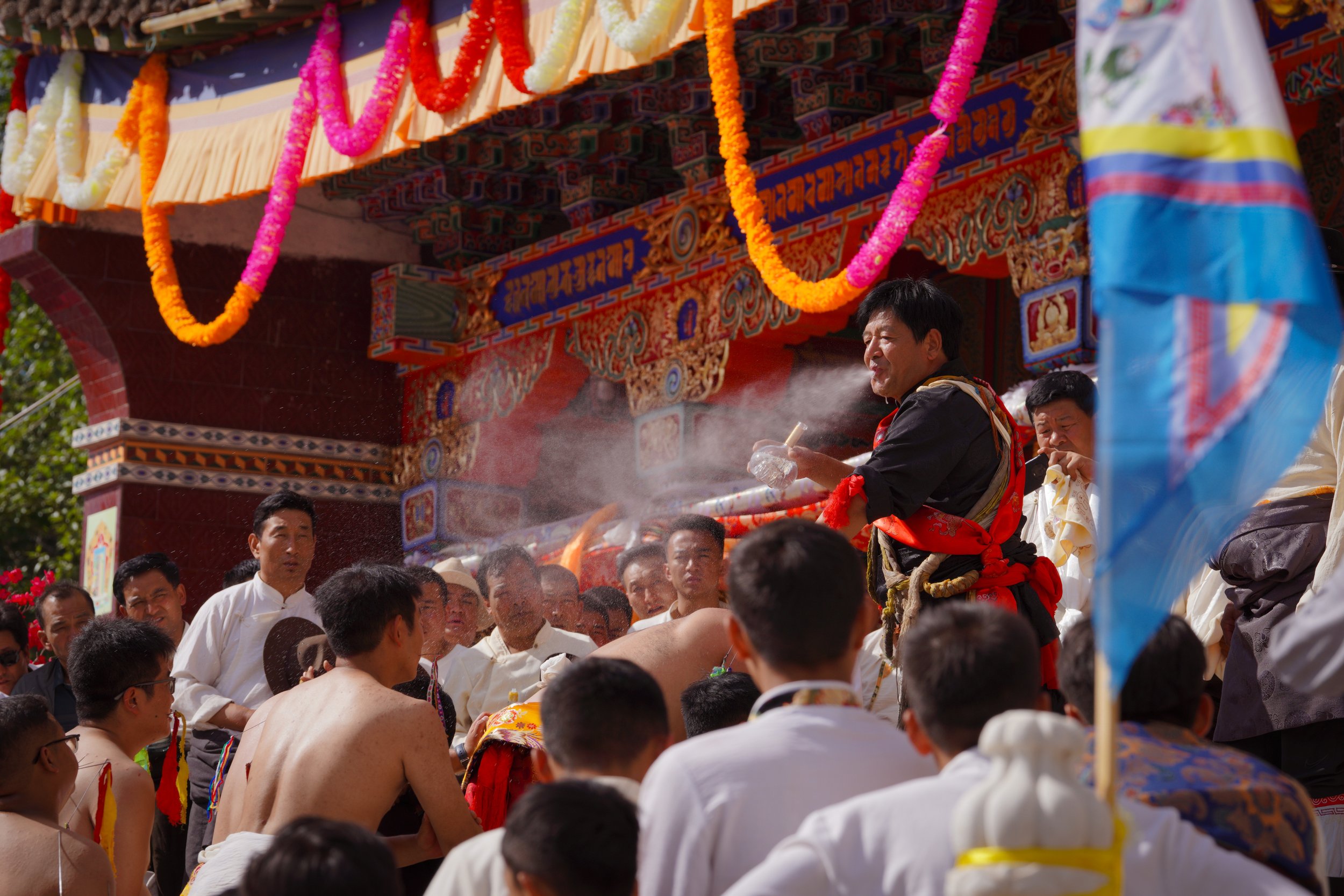
保安下庄 | BAO AN XIA VILLAGE
Bao An Xia Village is one of the villages allied with Ha La Ba Tu Village and is the biggest among their alliance (which does not include Lang Jia Village). Their Lawa is also known as the most powerful, who, in earlier years, would break alcohol bottles over his head. The Lawa in each village decides what he wants to do during celebrations, such as whether or not he wants to 开山 (Kai Shan).
During the celebration, young men will participate in the traditions of 口钎 (Kou Qian) and 背钎 (Bei Qian) - oral and back skin piercings. Some of the oral piercings in Bao An Xia Village took place onstage, where the host Lawa would pierce their mouths. The tradition symbolizes the locking of the mouth - preventing disease from entering their mouths. The ritual is entirely voluntary, and there is no age limit, so kids as young as ten were participating in the tradition for the first time. After a dance, some line up before the Lawa to have their oral piercings taken out. One of the young men afterward said that the Lawa wasn't gentle, and it had hurt. However, more often than not, these piercings leave no trace of blood, do not scar, and do not get infected, which is seen as a spiritual omen.



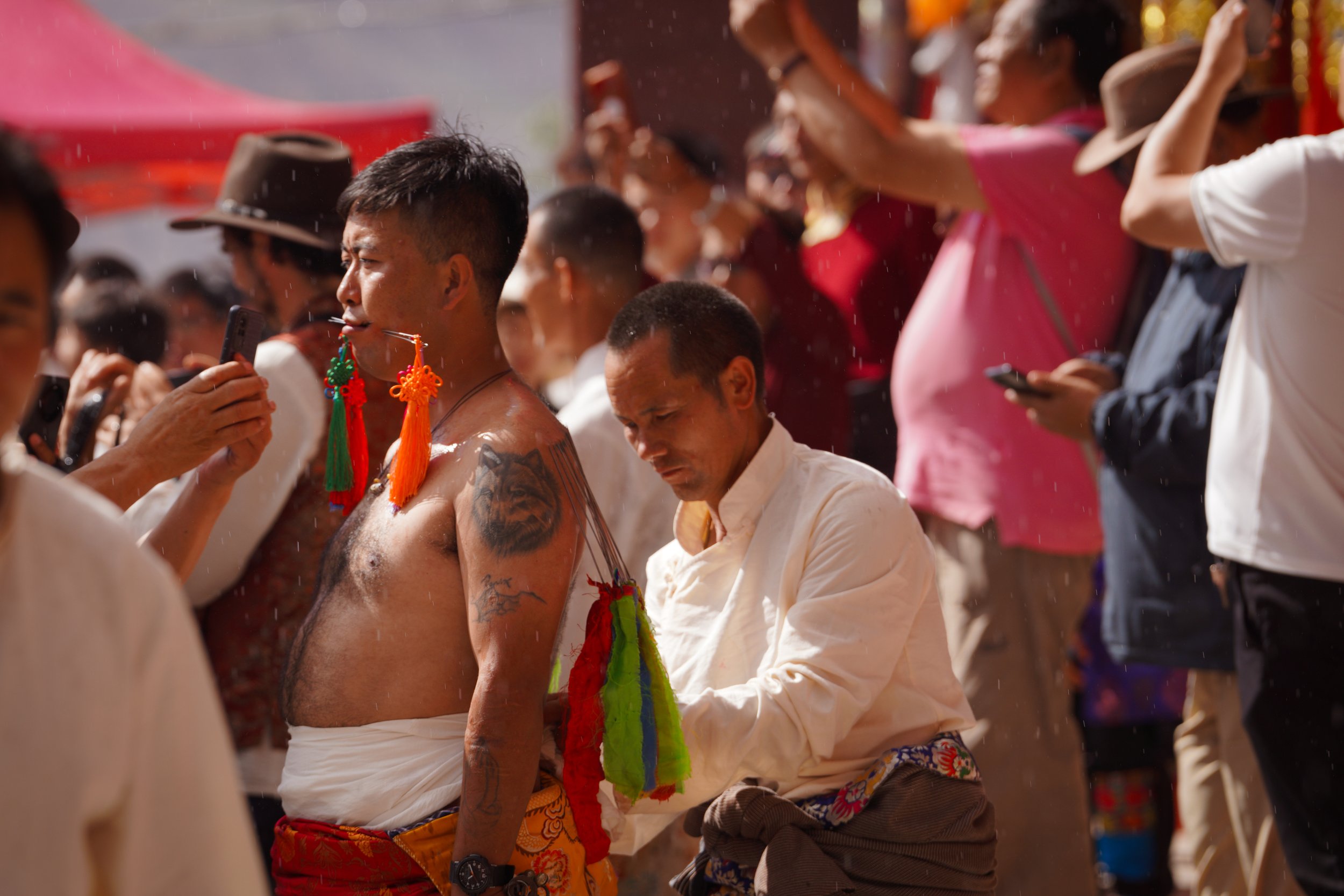


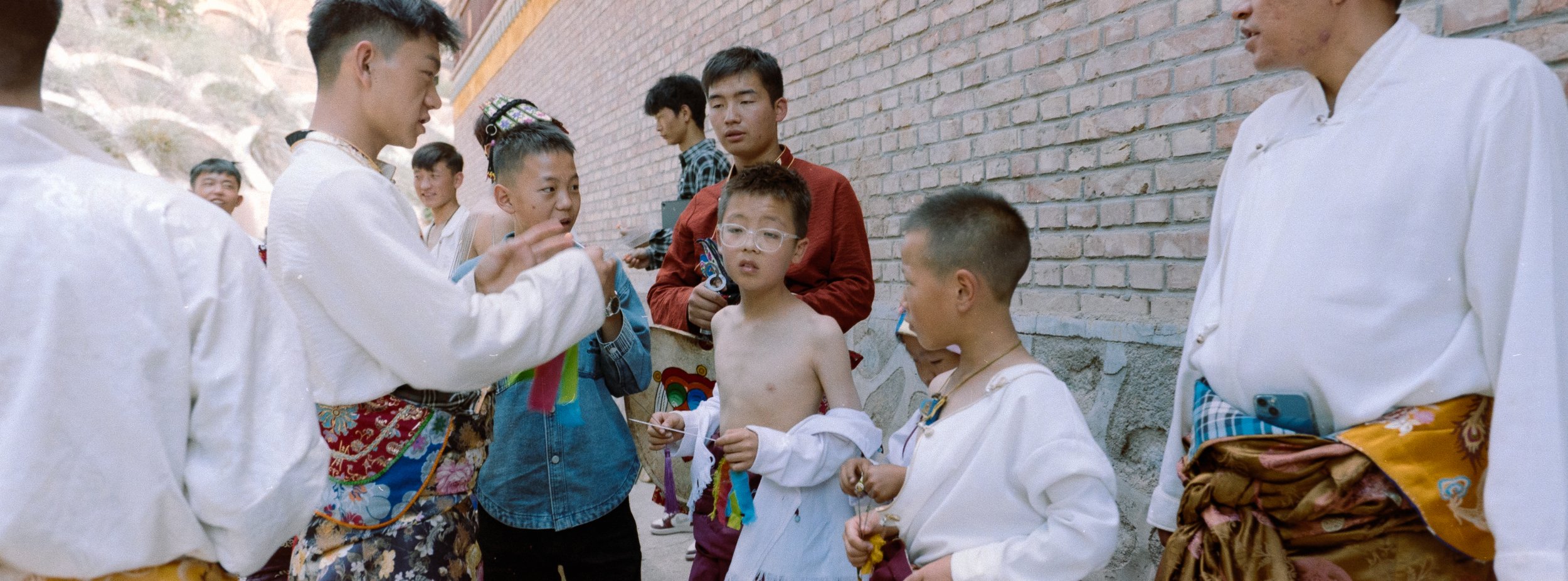

Behind the temple, many of the young men would prepare for both 口钎 (Kou Qian) and 背钎 (Bei Qian). Alcohol plays another role in these traditions by acting as a disinfectant. The number of back piercings depends on the person, with some opting for as many as 30 or 40. After the piercings, the young men grab their drums and wait to dance in front of the temple and their Lawa. The needles would begin to drop as they danced with their drums.





